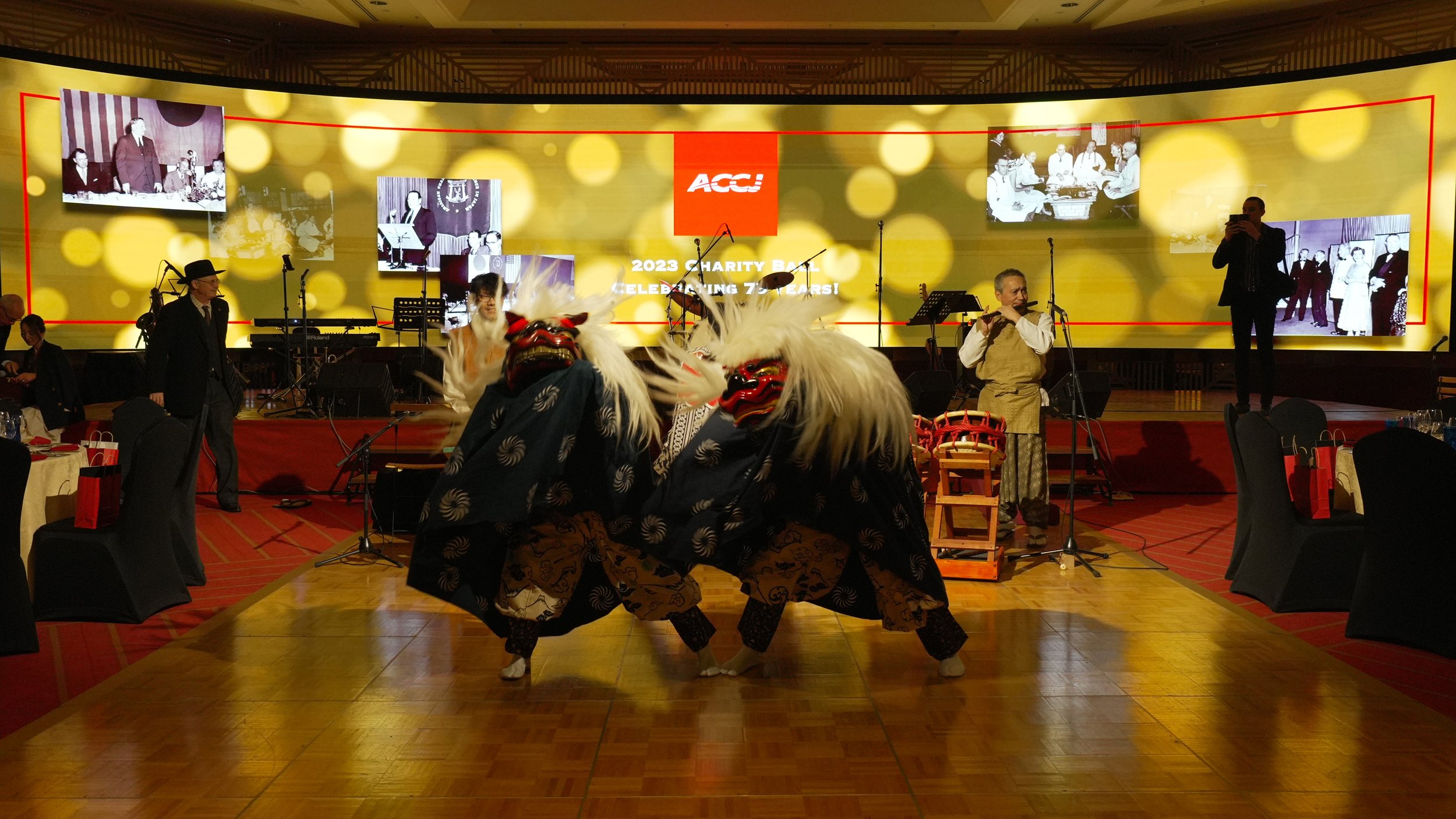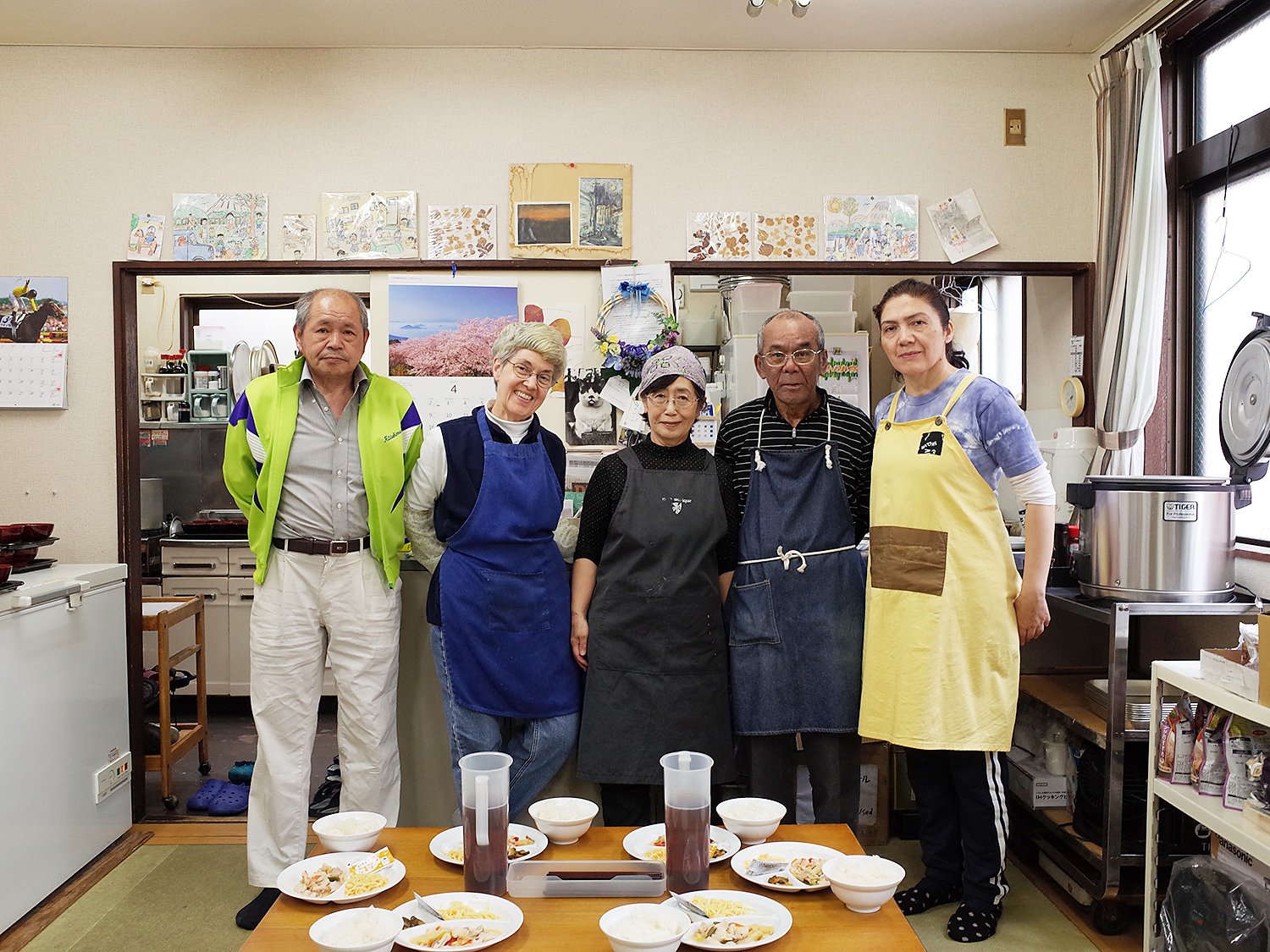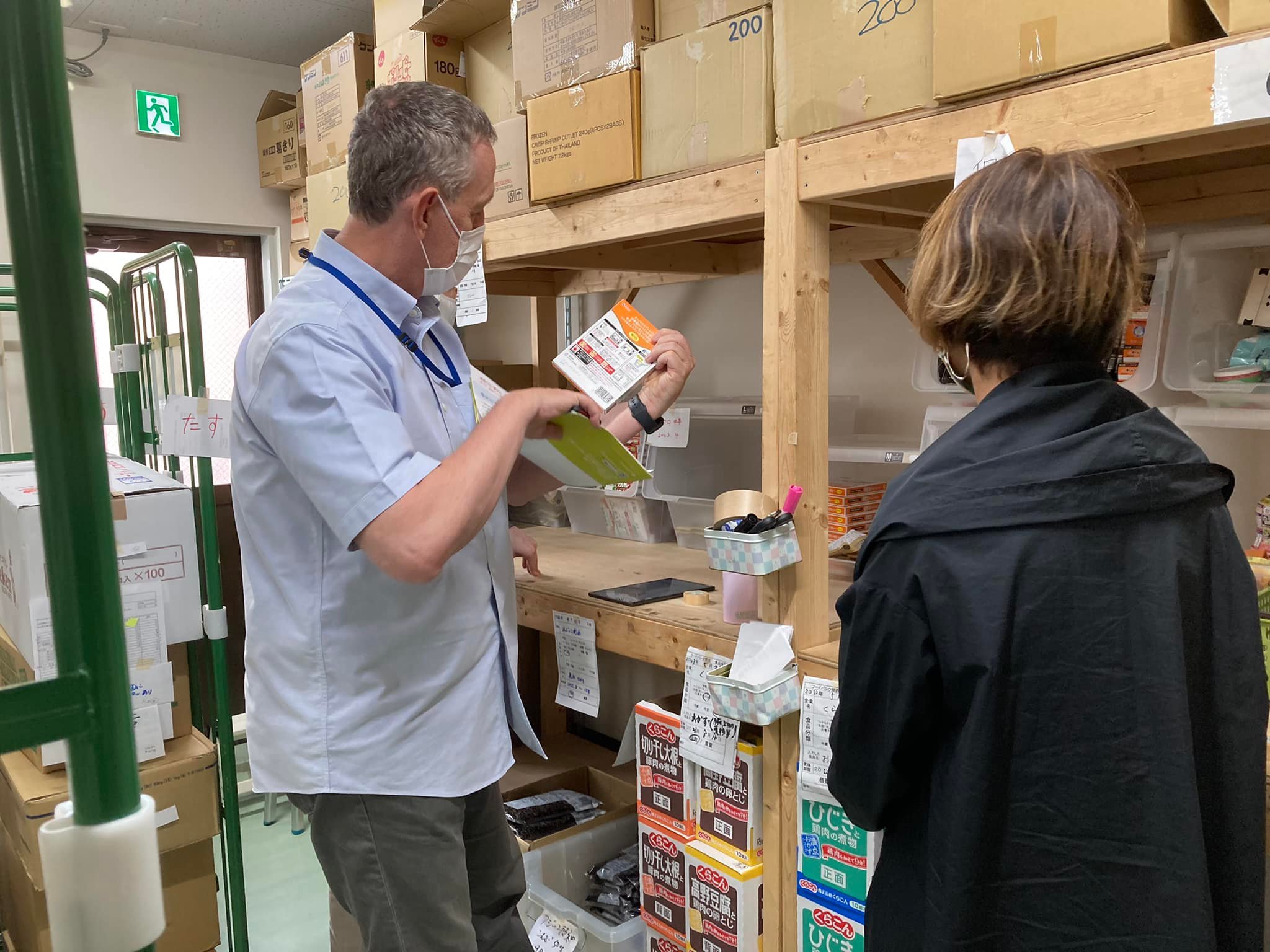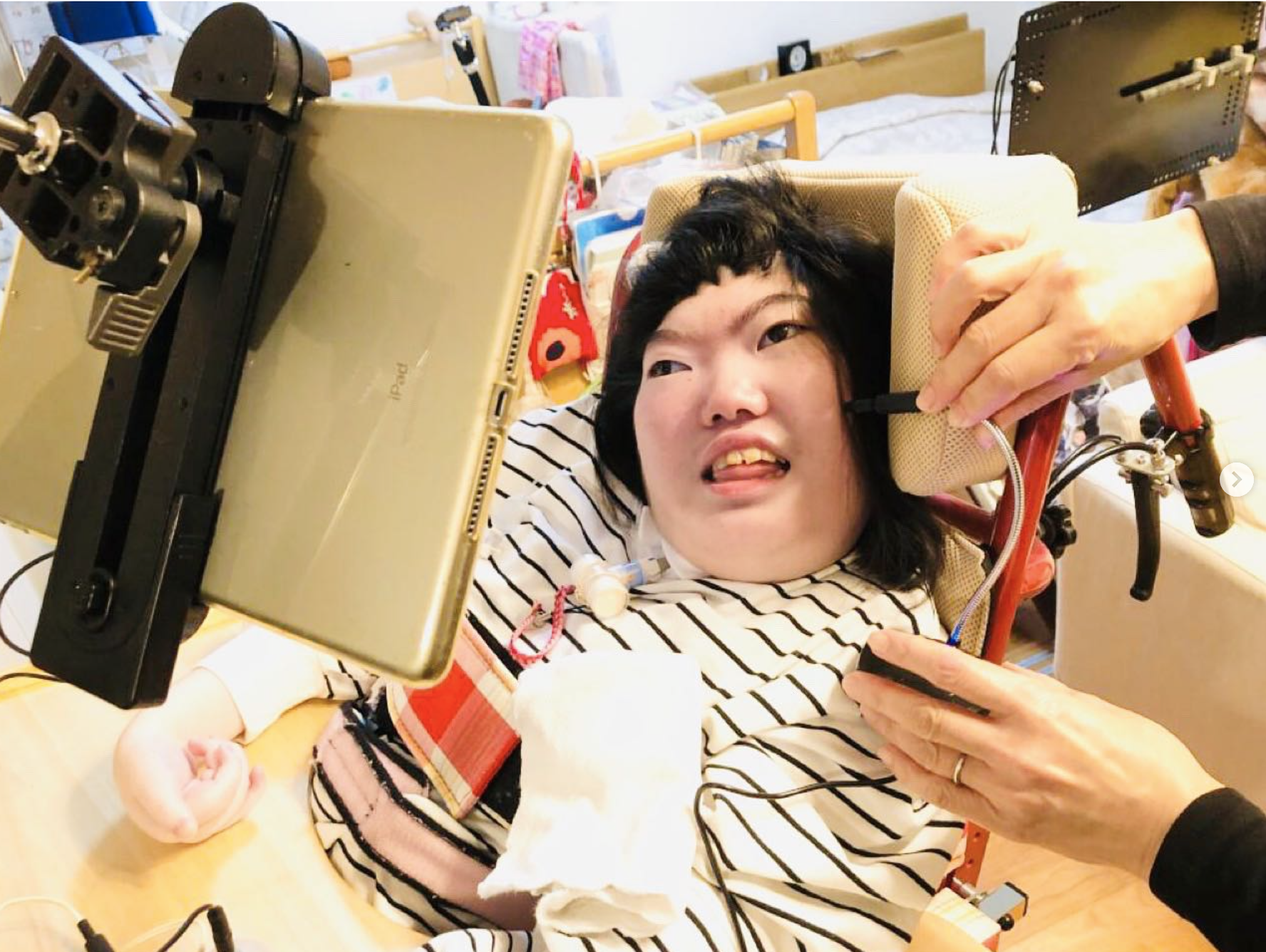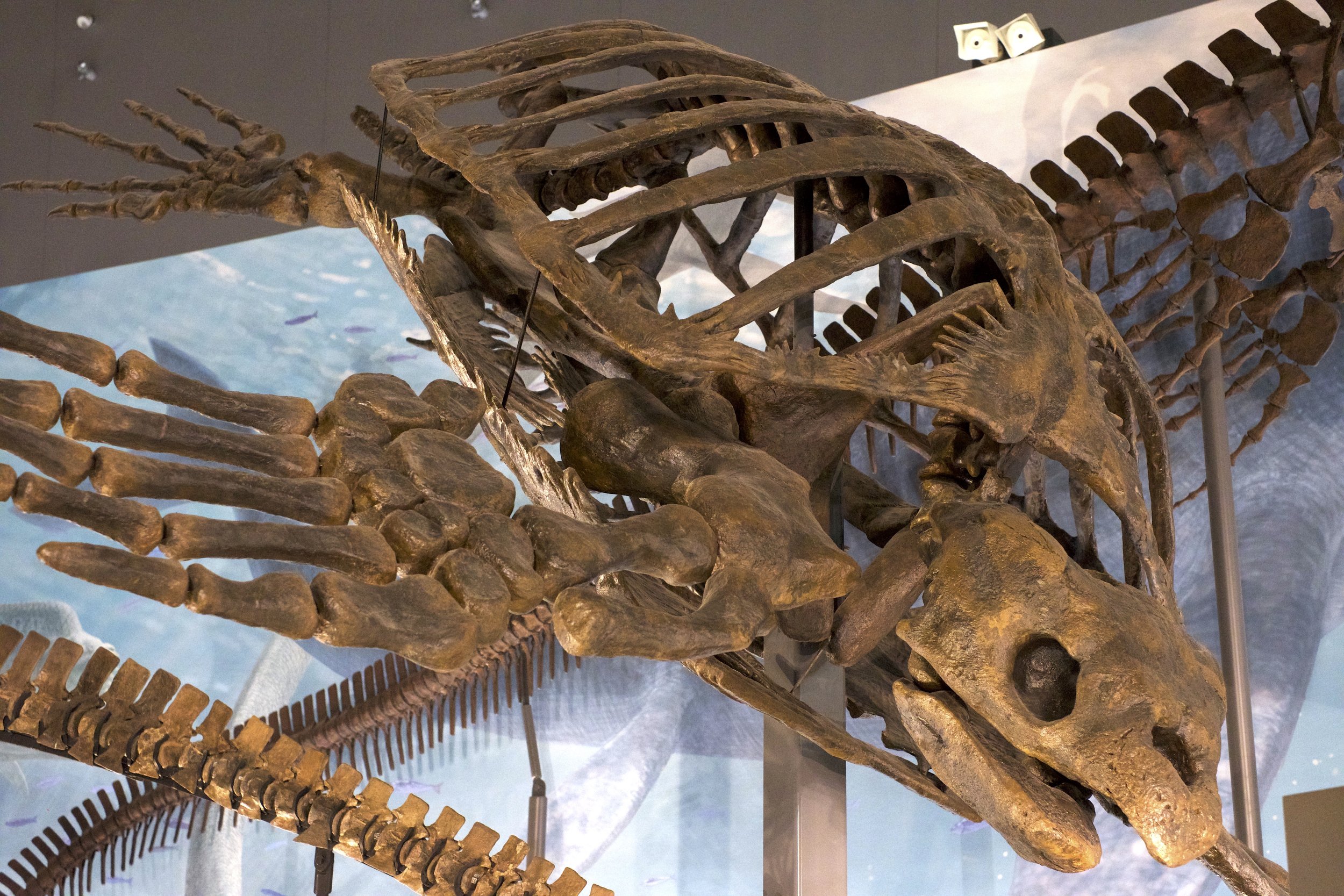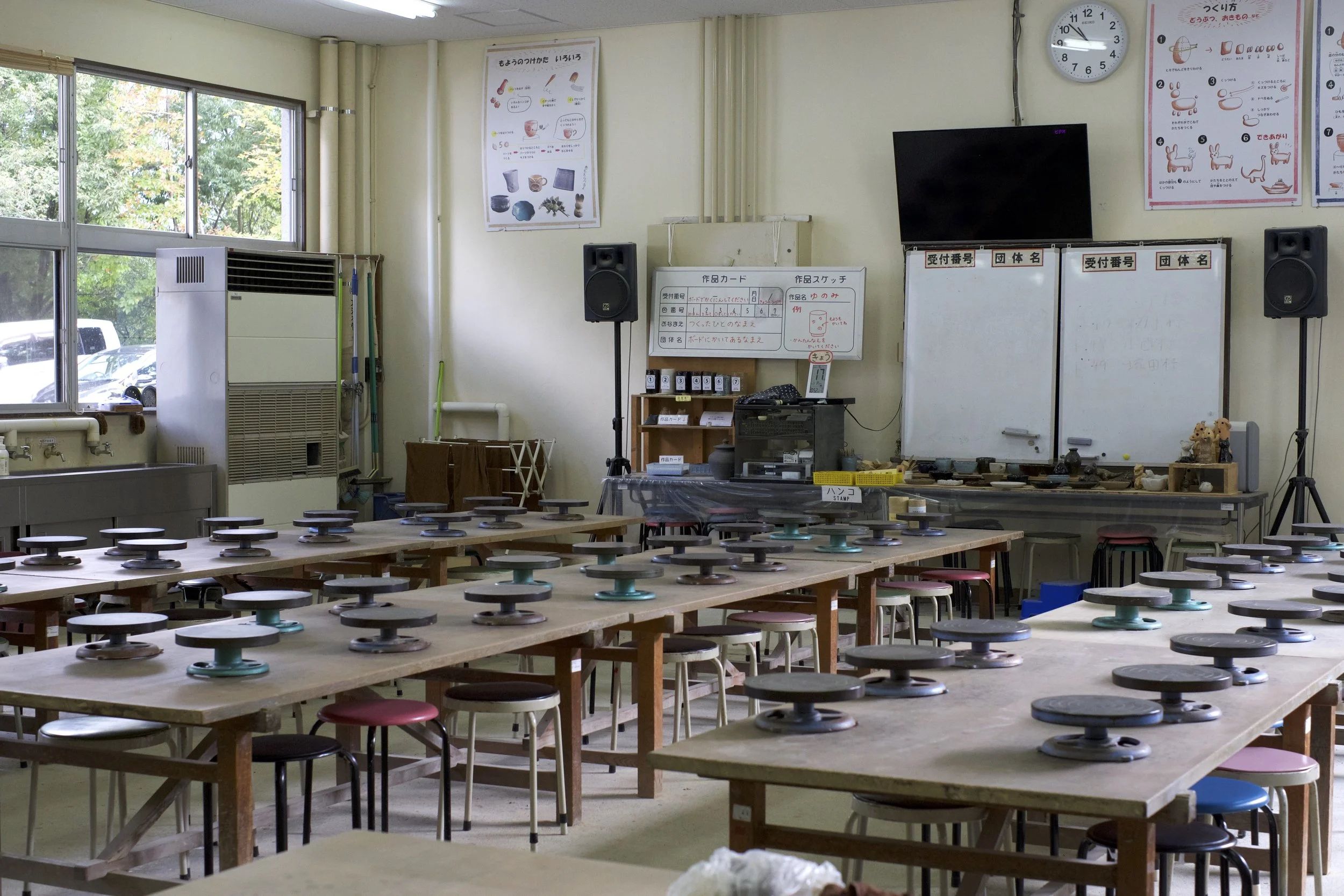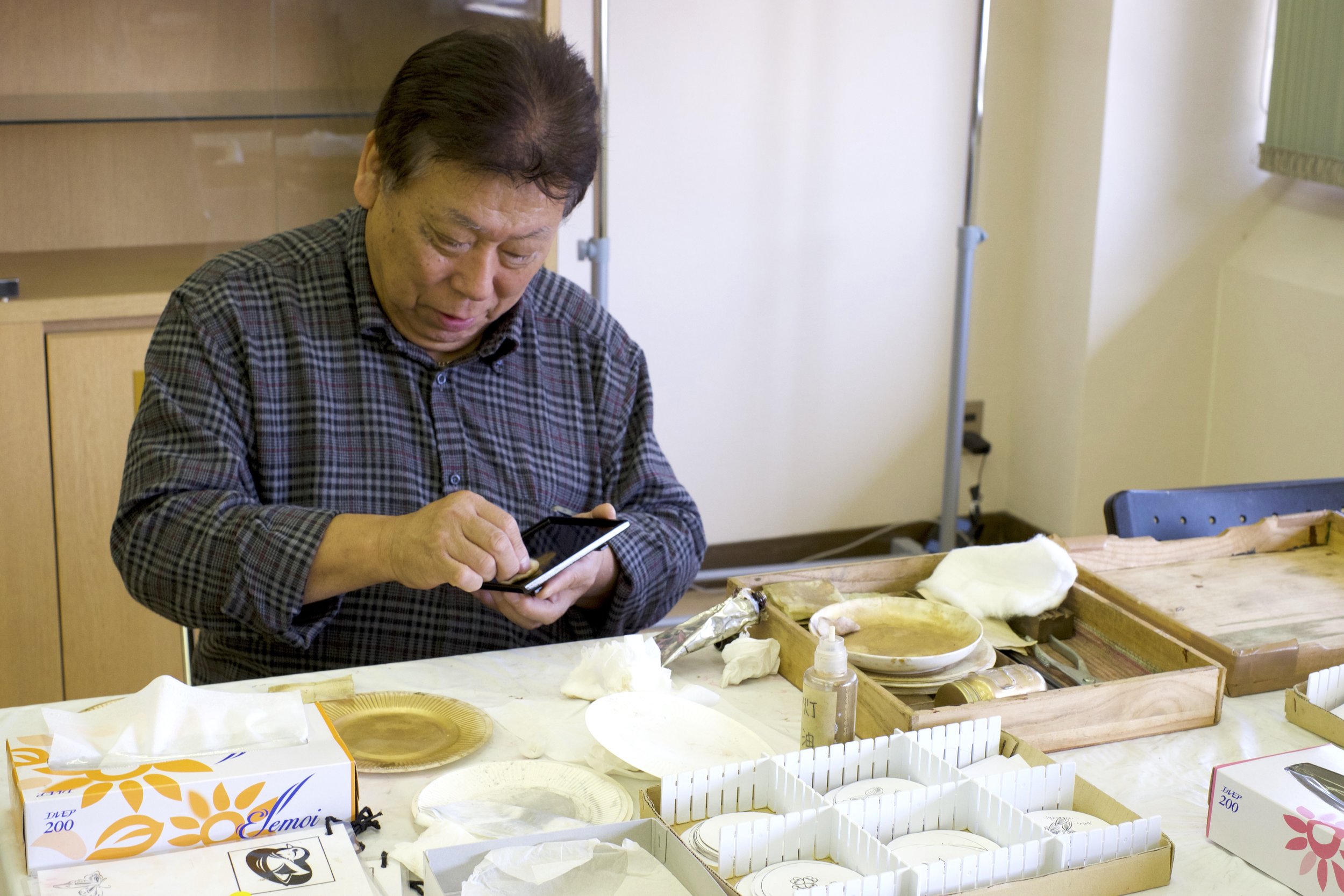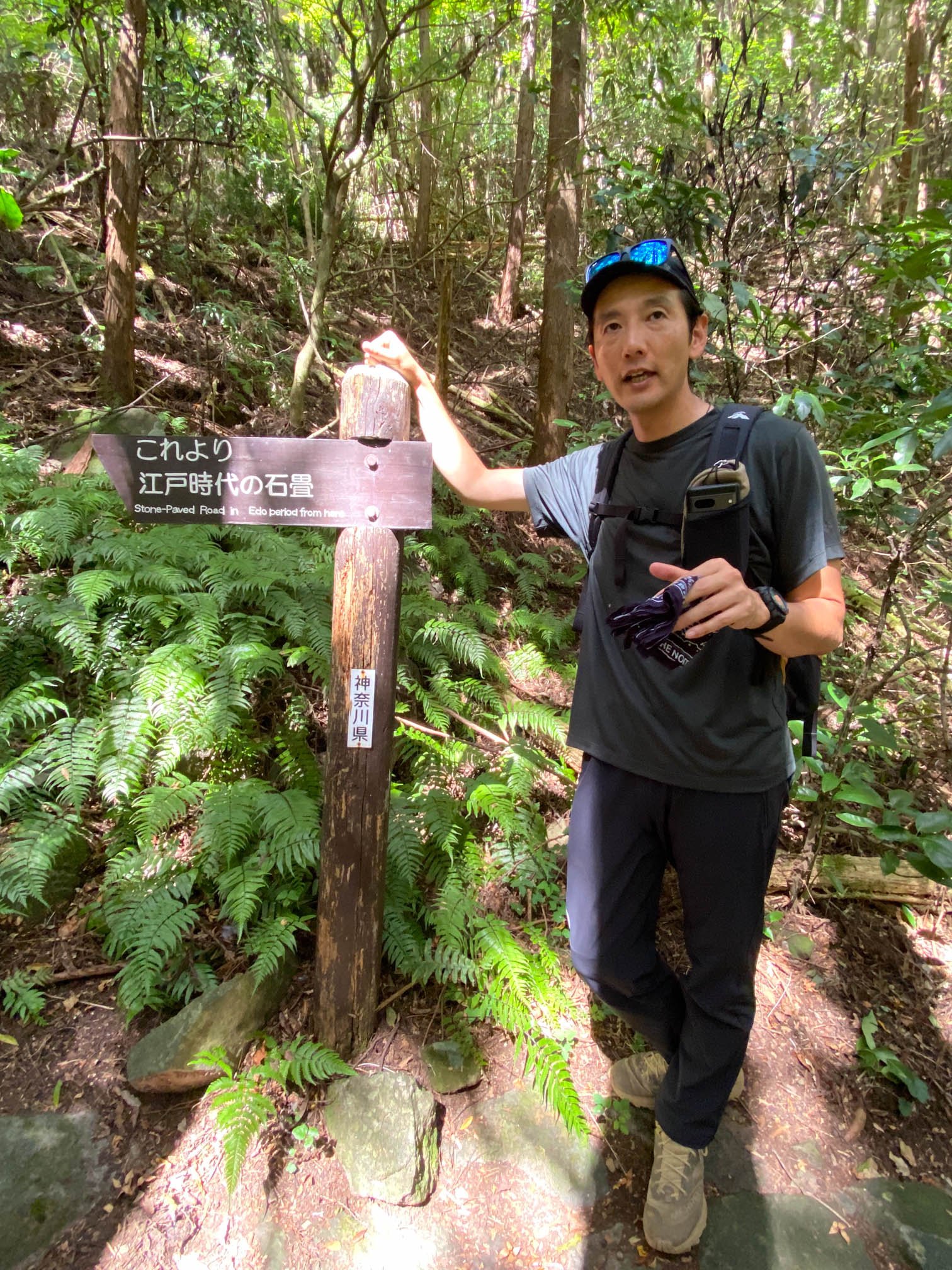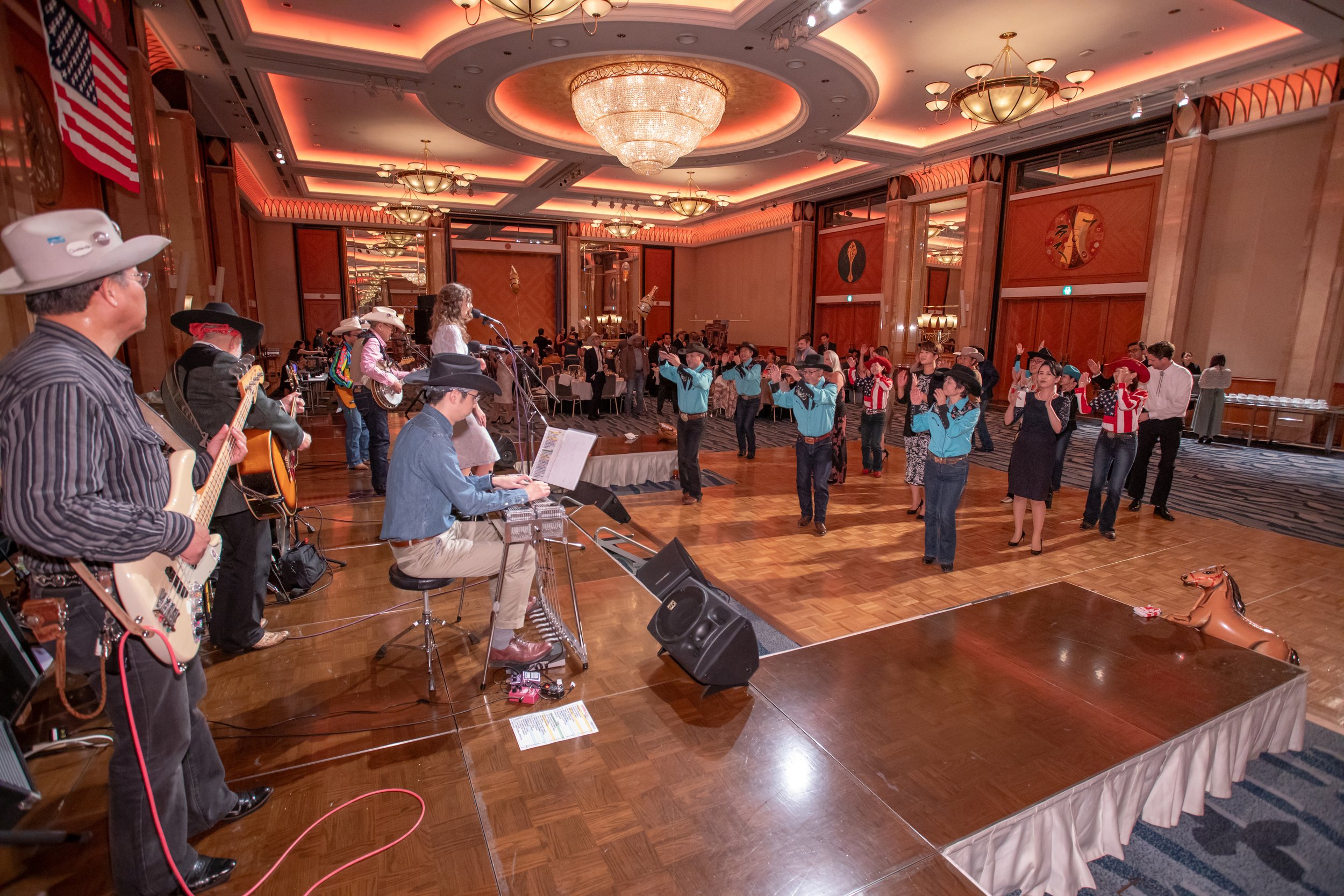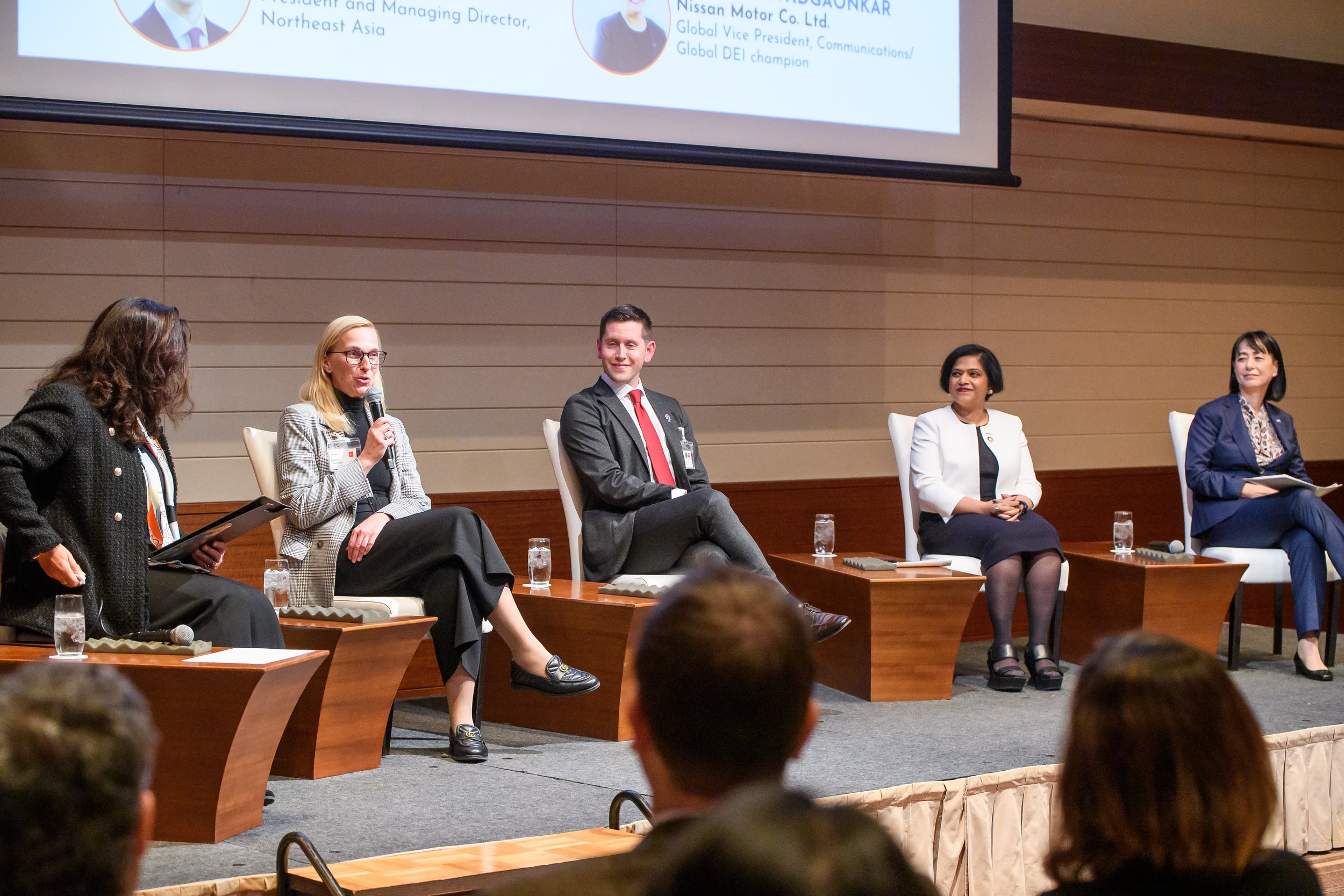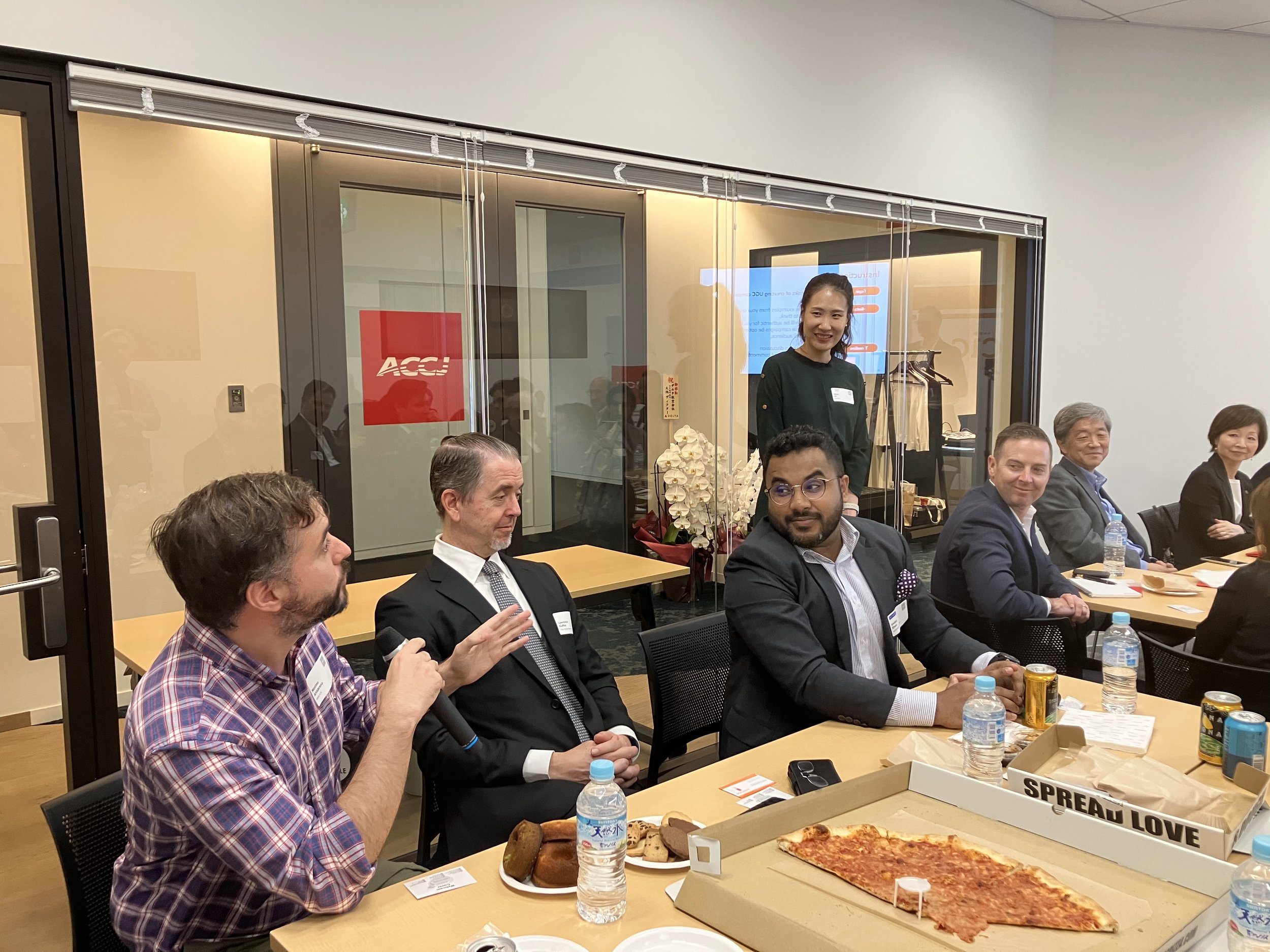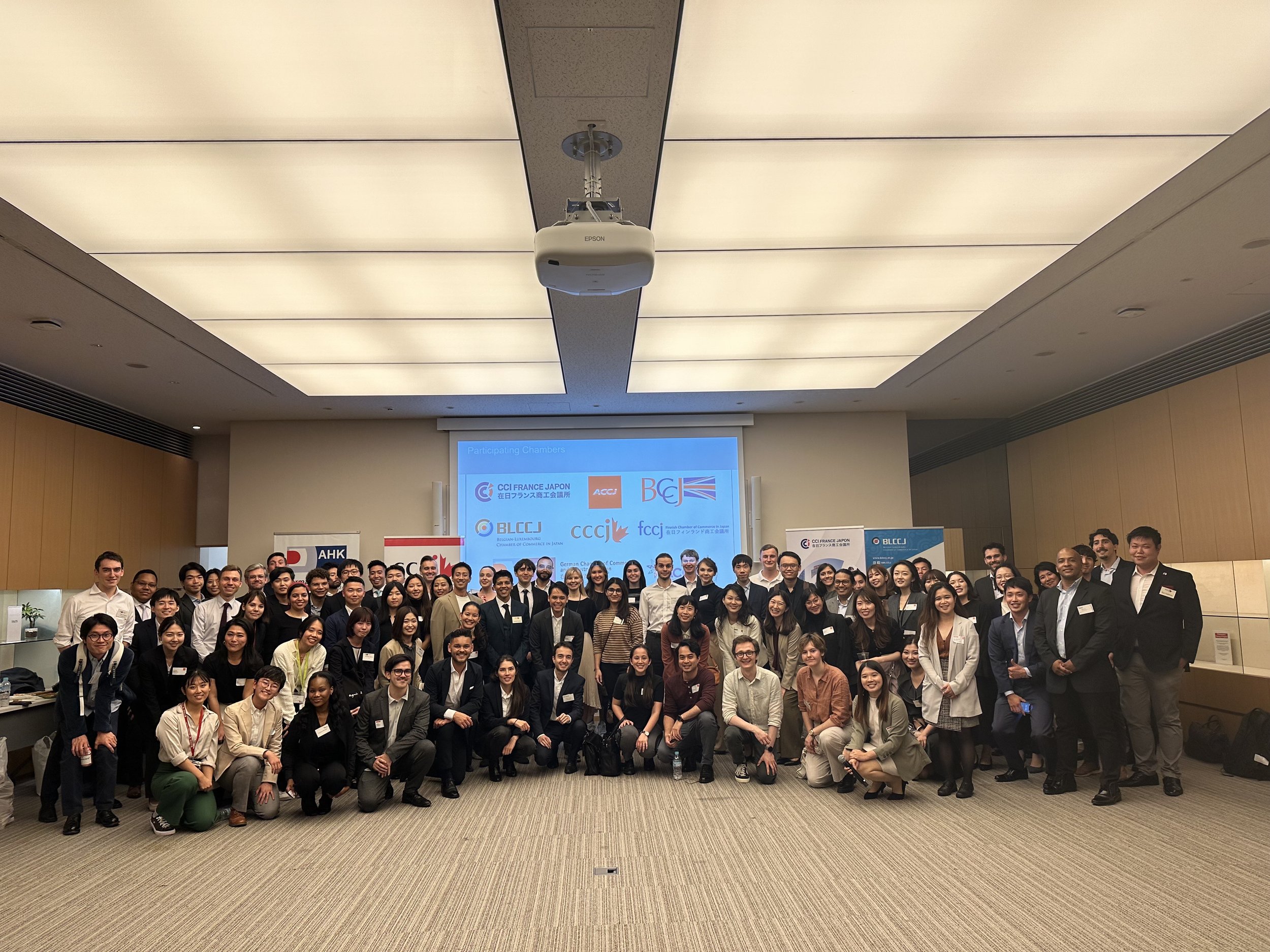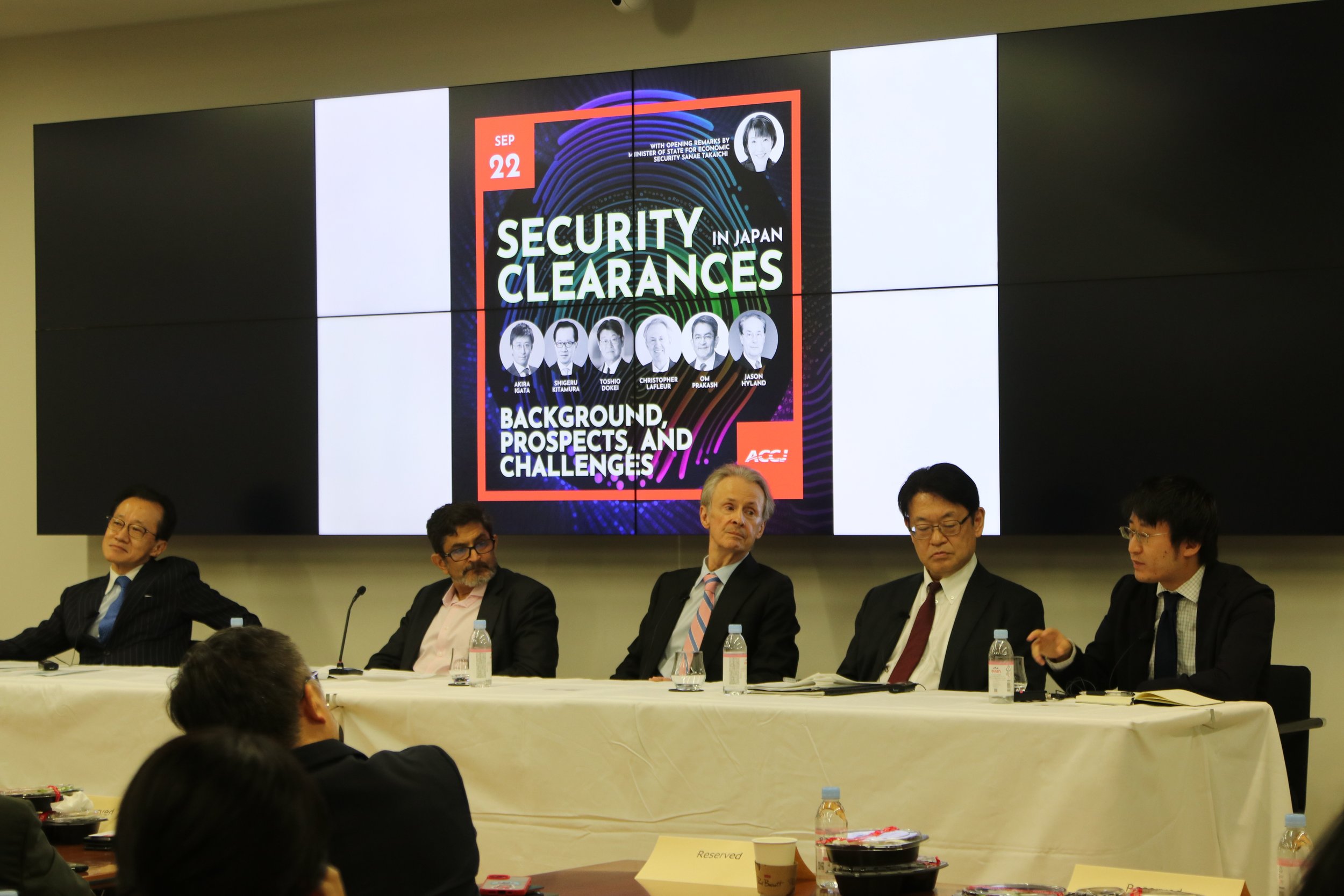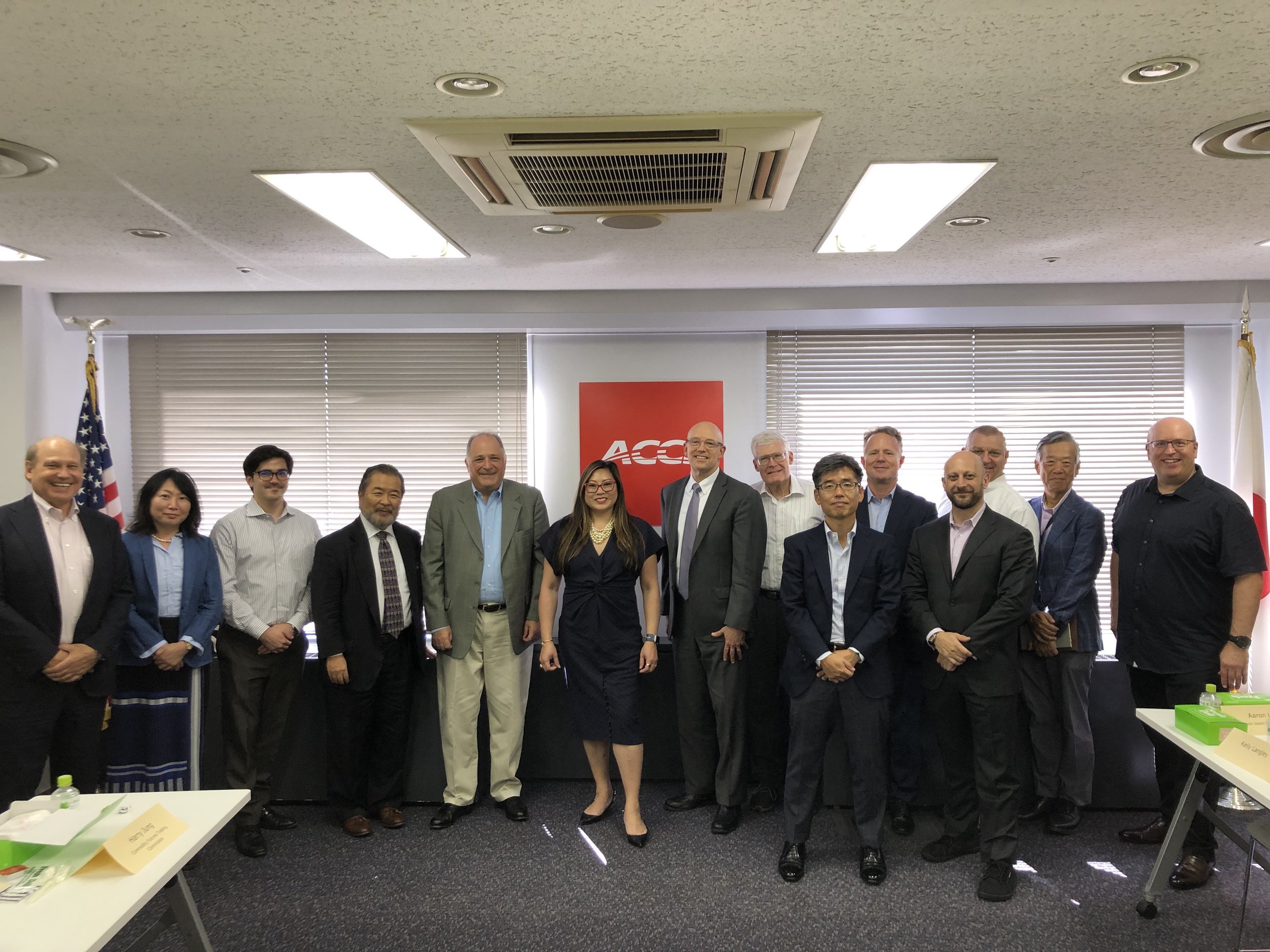Charting the Course
The ACCJ Journal sits down with ACCJ President Victor Osumi to learn more about how his career took flight, how he became involved with the chamber, and the path he sees ahead as he takes the helm for 2024.
ACCJ President Victor Osumi shares his thoughts on 2024 and the chamber.
Photos by Shelley Mae Photography
January 1 marked a change in leadership for the American Chamber of Commerce in Japan (ACCJ) as Victor Osumi, managing director and president of Japan operations for Delta Air Lines, Inc., was elected to guide the chamber in 2024.
Having served as a vice president last year, Osumi joined the board as a governor in January 2021 and has played an active role in chamber advocacy through the DC Doorknock visits to Washington and Diet Doorknock meetings with Japanese lawmakers.
The ACCJ Journal sat down with the former pilot at Delta’s office near Shiba Park to learn more about how his career took flight, how he became involved with the chamber, and the path he sees ahead as he takes the helm as president.
Tell me a bit about your background.
Growing up in a diverse, dual-culture environment, I spent most of my early years in Los Angeles, but I went to high school in Florida. My father was a Japanese expat. That’s what brought me to the United States. I also spent some time in school in Japan. I had dual citizenship, but Japan requires you to choose one by age 22. So, when I was 21 and joined the US Air Force, I chose to keep my US citizenship.
What led you to become a pilot?
I always had a passion for flying. After high school, I went to the Florida Institute of Technology and majored in aviation management, with a focus on flight technology and aeronautics. That led me to get my private pilot license, commercial pilot license, and flight instructor license.
I joined the Air Force because of this passion. I also thought that I could get a lot of flight hours, and that could create a path to joining a US airline as a pilot. But when my physical condition made it more difficult for me to fly, I got into management. Since I couldn’t fly, I decide to leave the Air Force.
Where did that course change take you?
When I shifted away from aviation, I joined a hotel company. That gave me experience in hospitality and an understanding of tourism, what it takes to be the best of the best when it comes to customer experience and service. I thought it would be for just a couple of years, but I ended up spending 27 years in the hotel industry.
That really gave me the backbone of where I am today. I gained knowledge through the financial side, customer service, and food and beverage. I also sat on the owner’s side of the property, which gave me additional insight into what a private equity company does, how they operate, and how they make decisions on investment in different countries.
Now, here I am back where my original passion lies: aviation and airlines. It took me a long time—almost three decades—but it came full circle.
How did you become involved with the ACCJ?
When I was assigned to Japan in 1998, I thought I would be here for five years and then I would go back to the United States. But I found that this country is where I belonged. At that time, most of the management at global hotel companies were American expats. They needed someone who could understand, speak, read, and write Japanese. And I thought that working in Japan for a global company gave me more opportunities for career advancement.
Ever since, either directly or indirectly, I have always been involved in chambers. I worked at Hyatt, then briefly with the IHG Group, and then twice at Marriott, which is a global, US-based company.
Being part of the ACCJ has given me a great opportunity to network and expand people-to-people relationships in the community.
Are there other career benefits you’ve felt from ACCJ involvement?
In the airline industry, we really value our relationship with the government, anywhere we go. I think it is the same for a lot of chamber members. They expect to have some type of advocacy dialogue, whether it’s with the US Embassy, the US government in Washington, or the Japanese government. We had a great opportunity in December during our Diet Doorknock to meet with lawmakers and officials to voice our mission and what we’re trying to accomplish.
And, of course, there is the education aspect. There are so many committees and forums at the ACCJ, and these offer great opportunities to learn more about a wide range of areas, from investment and finances to healthcare and pharmaceuticals—almost any area of business you can imagine. This has been a great experience for me.
Why did you decide to run for president?
It’s obviously a big commitment and will take a lot of my time. It’s a team effort. It’s not just me. At Delta, we value the presence of chambers commerce of commerce in each country. Particularly for Japan, the Atlanta headquarters recognized the importance of being part of the ACCJ and the value in me serving as president.
Of course, I have big shoes to fill following Om [Prakash]. But again, he and I are both ex-military, so he always said that I was second in command. Last year, when there were some times when he was not able to be present, I took the controls in a way. And having had that opportunity really helps smooth this transition for me, I feel.
Why is 2024 a special year?
It is the year of the dragon, but not just any dragon. Each of the 12 animals in the Chinese Zodiac has five types associated with the elements. This year’s dragon is the wood dragon, called kinoetatsu in Japanese. It only comes around every 60 years. The last time was 1964, when the Olympics were held in Tokyo, the shinkansen began operations, and I was born.
Kinoetatsu means this is a year when the energies of growth and adaptability associated with the element of wood in Chinese Wu Xing philosophy combine with the dragon’s qualities of power, prosperity, and transformation.
What do you see as the key initiatives and advocacy points for 2024?
My vision for the ACCJ this year centers on three main areas:
- Fostering partnership
- Embracing progress
- Bridging the future with excellence
The Indo-Pacific Economic Framework for Prosperity (IPEF) is an area I feel is especially important. It is key not only for Japan but the Asia–Pacific region, and the ACCJ must continue to be part of the discussions around IPEF.
Of course, diversity, equity, and inclusion will remain important, as will sustainability and cross-border investment.
One I see as especially big, as it impacts all the others, is digital transformation. Not just “going digital” as some people might see it, but the many aspects that can impact industries. In transportation, for example, one of the biggest issues is the free flow of data across borders. This would allow us create things such as paperless passports, with face-recognition technology used to ensure security. But there are still issues to resolve so that the US side has full confidence in Japan’s data security.
And as we talk about economic security, I think that data is going to be one of the biggest parts to bringing about economic security. It has tremendous value. But we need an agreement between the Ministry of Economy, Trade and Industry and the US Department of Commerce to make sure that we have cleared out the trust issues that impact digital transformation.
How important has US Ambassador Rahm Emanuel been to ACCJ advocacy?
We were missing an ambassador for almost three years. We always have great representatives and support from the US Embassy, but when Ambassador Emanuel arrived, he hit the ground running. He has been a tremendous help to the ACCJ and Japan. We really needed somebody like him to represent the United States in the Japanese community. I have very high respect for Ambassador Emanuel.
When he arrived, two years into the Covid-19 pandemic, there was pressure from many areas and organizations to get the borders reopened. The ACCJ played a part in making this finally happen, and Ambassador Emanuel and his staff were key. The chamber was able to speak up and serve as a conduit between our members and the Japanese government, and also the US government to get their help as they pushed from their end.
Ambassador Emanuel also visited Chubu last July in support of efforts to resume flights from the region to the United States. He met with ACCJ members from our Chubu Chapter and area leaders that included Aichi Governor Hideaki Ohmura, Nagoya Mayor Takashi Kawamura, and Riki Ishizuka, president and chief executive officer of the Chubu Centrair International Airport.
These are not only examples of his effectiveness, but how both the US and Japanese governments value the ACCJ’s voice.
What else would you like to say to members?
As we continue our celebrations to mark the ACCJ’s 75th anniversary, one thing I would like to ask is for everyone to help grow our membership. Word of mouth is very important. So, if there is someone you feel is a potential candidate for membership, please let me know.
Related to this is finding ways to make the chamber even more appealing. Advocacy, education, networking, and dialogue with the US and Japanese governments are important. If you have ideas for making these more effective, I would love to hear them.
Let’s work together to make 2024 a great year and the ACCJ’s presence bigger than ever before.
2023 Leaders and Volunteers of the Year
The ACCJ honored the 2023 ACCJ Leaders and Volunteers of the Year at the December Leadership Forum. Learn more about the contributions each has made to better the community and contribute to the ACCJ mission.
The ACCJ recognizes exceptional contributions from across its three chapters
The 2023 Leaders and Volunteers of the Year with ACCJ leaders at the December 19 Leadership Forum, which honored their accomplishments. Photo: C Bryan Jones
Each year, the American Chamber of Commerce in Japan (ACCJ) honors members who have shown extraordinary dedication. We congratulate the 2023 ACCJ Leaders and Volunteers of the Year for their dedicated time and effort to the betterment of the community, and their contributions to the ACCJ mission, whether through philanthropy, advocacy, or engaging events.
Leaders of the Year
Barbara Hancock
Chair of the Charity Ball Committee for the past 15 years, Hancock kept fundraising a top priority during the Covid-19 pandemic through her management of virtual opportunities. In 2023, she devoted the same resources and energy to ensure that the spectacular Diamond Anniversary Charity Ball was a resounding success, overseeing every aspect from start to finish.
Hancock’s longtime dedication has not only led to outstanding events year after year, but has helped the ACCJ raise millions of yen for organizations working to improve the lives of those in need, including children and the homeless. She truly embodies the spirit of giving back to the community.
Ryan Watson (Kansai)
As co-chair of the Kansai Young Professionals Forum, Watson played an indispensable role in the group’s, from the initial proposal to the successful launch event in July. His efforts have provided new opportunities for Japan’s next-generation leaders to network and engage with the ACCJ.
He has also been a strong leader of the Healthy Urban Gardening, or HUG, project, which hosts hands-on community workshops while raising funds for Food Bank Kansai. This initiative has profoundly impacted the community by fostering sustainable gardening practices and addressing food insecurities for a greener, healthier Kansai.
Watson’s energy and dedication have created new opportunities for members to participate and get involved in the ACCJ and the wider Kansai community.
Yuji Suzuki (Chubu)
As co-chair of the Chubu External Affairs Committee, Suzuki organized a pivotal ACCJ meeting with US Ambassador to Japan Rahm Emanuel, industry executives, and Aichi government officials to discuss the importance of resuming direct flights from Chubu Centrair International Airport to the United States. He was directly responsible for ensuring that Nagoya Mayor Takashi Kawamura and Aichi Governor Hideaki Omura attended.
Suzuki’s endeavors have set the stage for an agreement to reinstate the route and were therefore integral to enhancing the Chubu region’s economic growth and strengthening US–Japan relations.
Volunteers of the Year
Yoshiko Zoet-Suzuki
In support of the Women in Business Committee, Zoet-Suzuki worked tirelessly throughout the year to prepare information and materials for a crucial advocacy viewpoint on the impact of Japanese parent-teacher association demands on parents. She spent countless hours researching media reports and government websites, as well as coordinating input to bolster the comprehensive viewpoint. Zoet-Suzuki is also responsible for translating materials for an upcoming ACCJ member survey on this issue, and translating the ACCJ privacy policy into Japanese.
Kanayo Okai (Kansai)
Okai was responsible for planning and executing several Kansai Business Programs Committee (BPC) events. She invited high-level speakers and came early to support the staff and connect with participants, always with her trademark positivity. In July, she served as emcee for the Kansai CEO Series event with Karl Hudson of Marriott, and was instrumental in the success of the event.
Furthermore, Okai shares an important perspective during the monthly committee meetings, and her motivation is an inspiration to both BPC leaders and members alike. Thanks to her, the committee will maintain the momentum generated by the successful events she has spearheaded.
Zan Diamantis (Chubu)
One of the Chubu Chapter’s most active and enthusiastic participants, Diamantis is not only participates in the Chubu Walkathon but also serves on several committees. He is responsible for co-organizing multiple events, including a grassroots cherry blossom-viewing fundraiser in April, resulting in new and exciting opportunities for engaging with ACCJ members.
Diamantis is an integral part of the ACCJ Chubu community, and we are grateful for his involvement and many contributions.
The Year Ahead 2024: Forecasts and Surprises
Qualitative predictions are based on a combination of experience and intuition. Like an inspired jazz solo, they deliver a genuine surprise that you did not expect but cannot live without once you’ve heard it. What unexpected riffs does 2024 have in store for Japan? Jesper Koll shares 10 twists and turns that could make for an interesting Year of the Dragon.
Ten twists and turns that could make for an interesting Year of the Dragon.
Forecasting is both an art and a science. Quantitative forecasts are based on probability models that cannot escape the assumption that the future will be a replay of the past. Qualitative predictions are based on a combination of experience and intuition. Like a beautiful Bach sonata, the former follows a predictable logic. Like an inspired jazz solo, the latter delivers a genuine surprise that you did not expect but cannot live without once you’ve heard it. The only certainty we have is that 2024 will bring both—existing trends evolving and genuine surprises.
I wish a happy, prosperous, and healthy New Year to you! And now here are my forecasts and possible surprises for 2024:
1. Japan’s inflation and growth outpace the United States.
We will see a full decoupling of the US–Japan business cycle in 2024 as America faces a sharp slowdown due to the 2023 US rate hikes cutting down both consumption and capital expenditure. In contrast, Japan’s economy will stay surprisingly strong, as neither the Bank of Japan nor the Ministry of Finance tighten.
2. Japan’s M&A boom goes global.
With the US recession creating opportunities to buy US companies and assets at significant discounts, Japan’s merger and acquisition activity will expand. Surprise: a major Japanese financial institution will buy a US bank, insurer, or payments company.
3. Japan’s MBO/LBO boom accelerates.
Spurred by pressure from shareholders and stock exchange, as well as low debt financing costs, management buyouts and leveraged buyouts will continue. Surprise: 2024 may be the first year when more companies go private and delist from the stock market than new startups going public and listing via IPOs.
4. Japanese CEOs step out of their comfort zone.
Rather than just relying on in-house R&D teams, Japanese CEOs will start to buy startups for future growth. One reason for US corporate dynamism is the aggressive use of “outside” innovation to supplement, improve, or disrupt “inside” businesses. Ninety percent of US startup exits are acquisitions, while in Japan, 90 percent are IPOs. Mark my words: Japan’s new generation of CEOs are taking risks and are not afraid to try and make 1 + 1 = 3 … or 4.
5. Japan’s corporate governance goes global.
So far, Japan’s corporate governance reform has been one-way, importing US “best practices” into Japanese boardrooms. A Japanese CEO appointed to a Wall Street firm’s board would be proof that Japanese governance has truly become world class. A positive surprise, yes. But if US multinationals are serious about multi-stakeholder governance, there is much to learn from Japan’s corporate leaders.
6. Japan launches its own Defense Advanced Research Project Agency.
Rising defense spending demands a fundamental rethinking of collaboration among universities, scientists, private enterprise, and public policy. Without fundamental change, the risk is that high defense spending will bring little or no positive benefit to Japan’s global competitiveness or domestic economy. The sooner Japan’s elite can agree on the rules and institutional governance for dual-use technologies and their scalable commercialization, the greater the certainty of both private and public spending on defense yielding positive multipliers.
7. Japan deregulates home-helper visas.
The combined problems of a growing labor shortage, a falling birthrate, and more Japanese women aspiring to professional careers cannot be solved without outside help for families. A very positive surprise would be if Japan followed the Hong Kong and Singapore model. There, professional couples can sponsor home helpers, with proper supervision and governance by local authorities. This is a pragmatic solution to reverse the declining birthrate and to reduce the runaway costs for public social and medical support for children and the elderly.
8. China synthetic biology moonshot delivers domestic food security.
China is the world’s largest importer of food. Dependence on the global food supply is the single biggest challenge for China’s leaders. Public and private investment in synthetic biology and the development of lab-grown and tech-assisted food is huge. The question is not if, but when, a supermassive scale-up solution will be announced by China’s biotech leaders. A science-based breakthrough on food-security for China—and thus the world—would supersize China’s credentials as the rightful global leader she aspires to become.
9. Elections shift alliances.
While all eyes are on the 2024 US presidential election in November, the vote in India in April or May could bring a big negative surprise. If Prime Minister Narendra Modi loses reelection, the impact could be far-reaching—not just for the Quad alliance comprising Japan, the United States, Australia, and India, but also the leadership of the emerging alliances around the Global South.
10. Germany wins Euro 2024.
Sunday, July 14, will bring the final of the UEFA European Football Championship. I am German, so naturally, I support Team Germany. But they have been playing shockingly poorly, and their performance has only gotten worse after they lost to Japan in the 2022 World Cup. So, the biggest positive surprise for me in 2024 would be Germany actually winning the Euro 2024 championship—especially since the final is played on the French national holiday, Bastille Day.
Shining Bright
ACCJ members and guests gathered at the Hilton Tokyo in Shinjuku on December 2 for one of the chamber’s largest annual events. And this edition offered a chance to celebrate the chamber’s 75th anniversary while also raising funds for charity.
Diamond Charity Ball celebrates the ACCJ’s 75th anniversary.
Members of the American Chamber of Commerce in Japan (ACCJ) and guests gathered at the Hilton Tokyo in Shinjuku on December 2 for one of the chamber’s largest annual events. And this edition, the Diamond Charity Ball, offered a chance to celebrate a major milestone—the chamber’s 75th anniversary—while also raising funds for charity.
The exceptional venue, amazing culinary offerings, spectacular entertainment, stellar selection of fine wine and spirits, and expansive silent and live auctions and raffle helped us achieve our goal.
Jesper Koll and Nahoko Bolden emceed, and performers included Marcus Pittman and the High Roller Horns (featuring the Q Factor G.N.P.) and Wakiri, a group of passionate artists comprising drummer and dancer Akira Katogi, shamisen player and composer Etsuro On, and Shunsuke Kimura, a Japanese composer who plays flute and tsugaru-shamisan. ACCJ intern and Bishop Scholar Matthew Trani also shared his singing talents.
“Success would not have been possible without the invaluable support of our generous sponsors, enthusiastic attendees, and the many individuals who took part in our online raffle and auction.”
Together with the ACCJ staff, the Charity Ball Committee—Barbara Hancock, Kevin Naylor, Ryan Watson, Tomomi Fujita, Sonia Dhillon Marty, and William Titus—worked diligently to organize the event.
But success would not have been possible without the invaluable support of our generous sponsors, enthusiastic attendees, and the many individuals who took part in our online raffle and auction.
The committee extends its deepest gratitude to our sponsors and the ACCJ community for making a big difference in our ability to help those in need. We are grateful to each and every person involved, and extend a huge thank you to all!
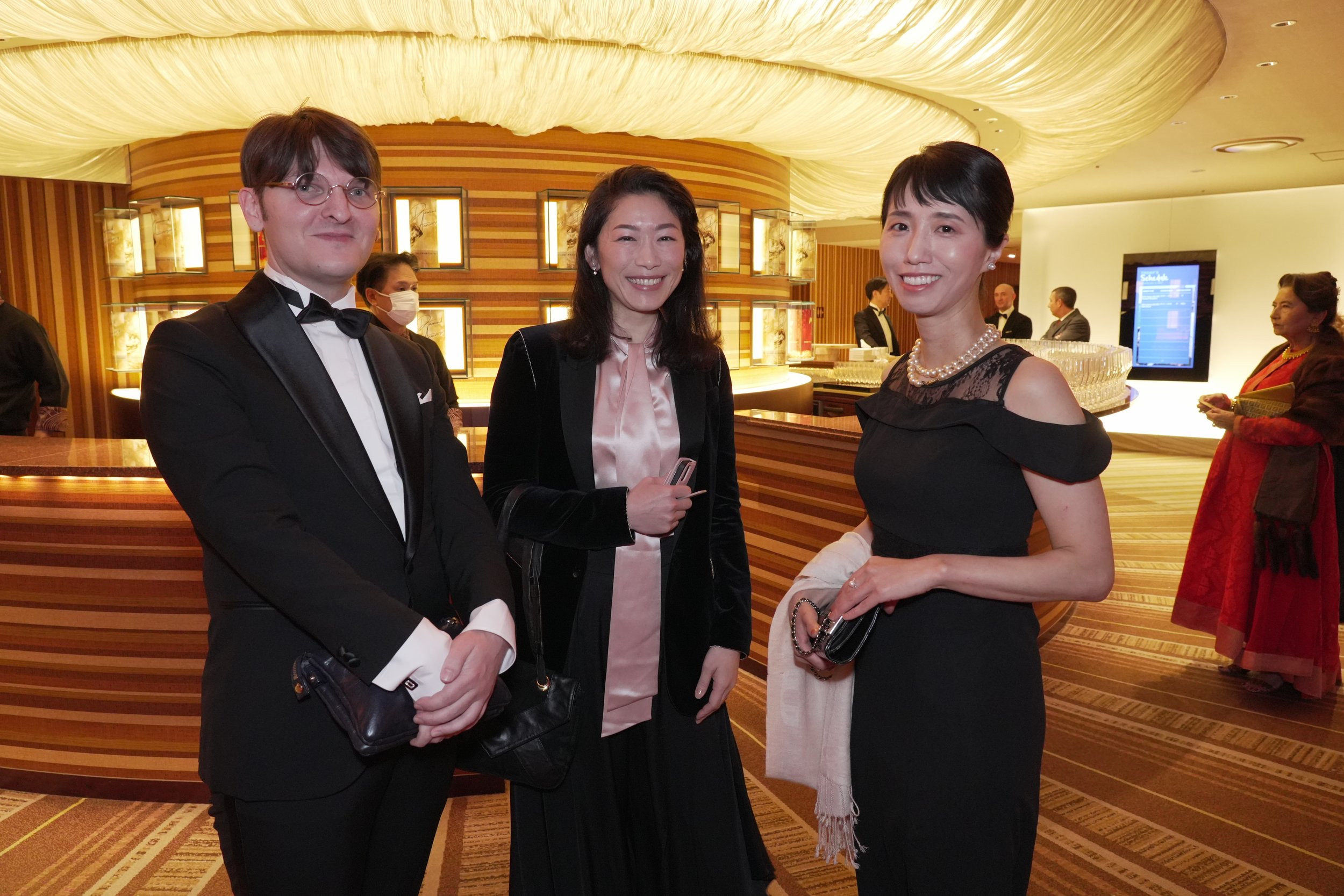

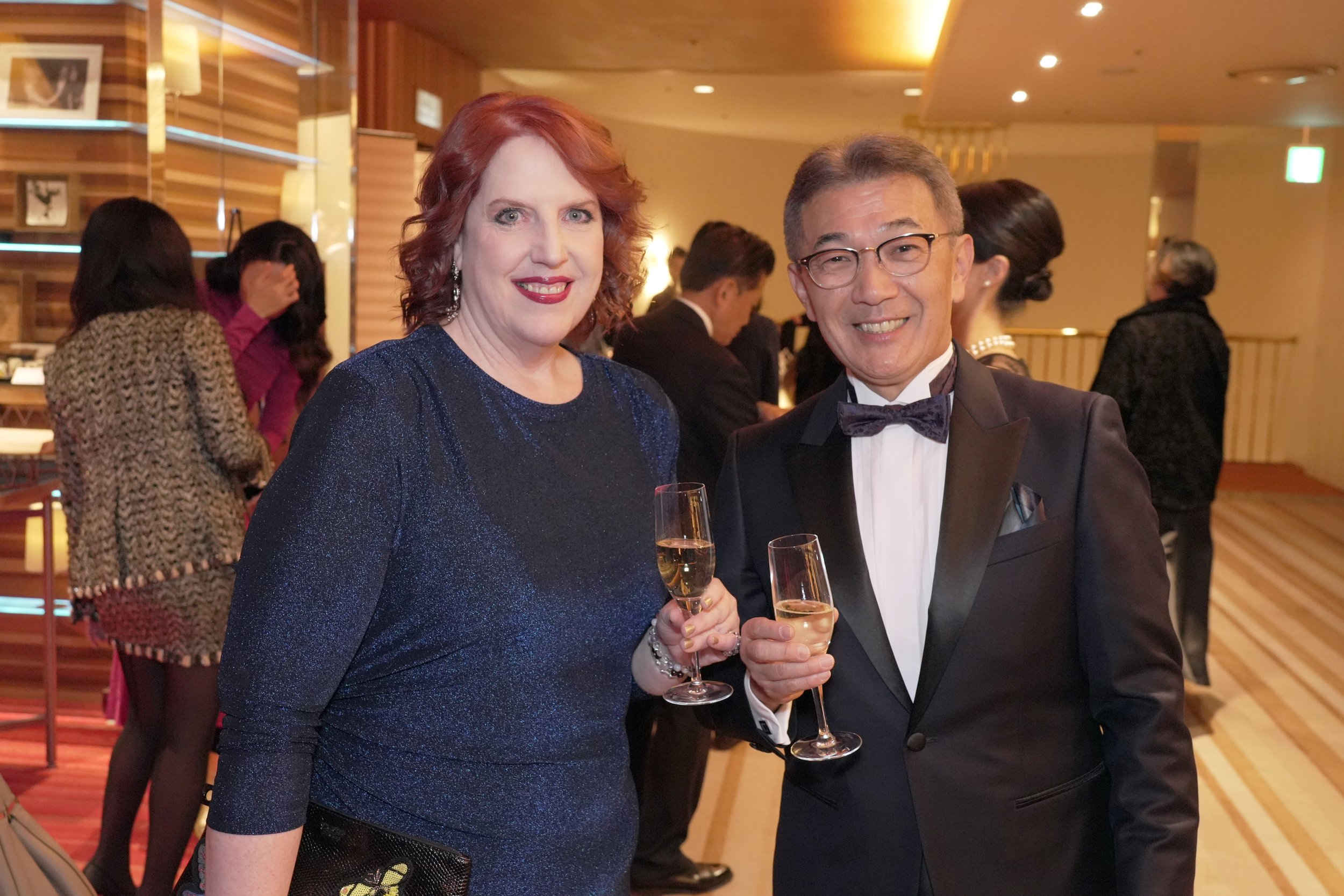
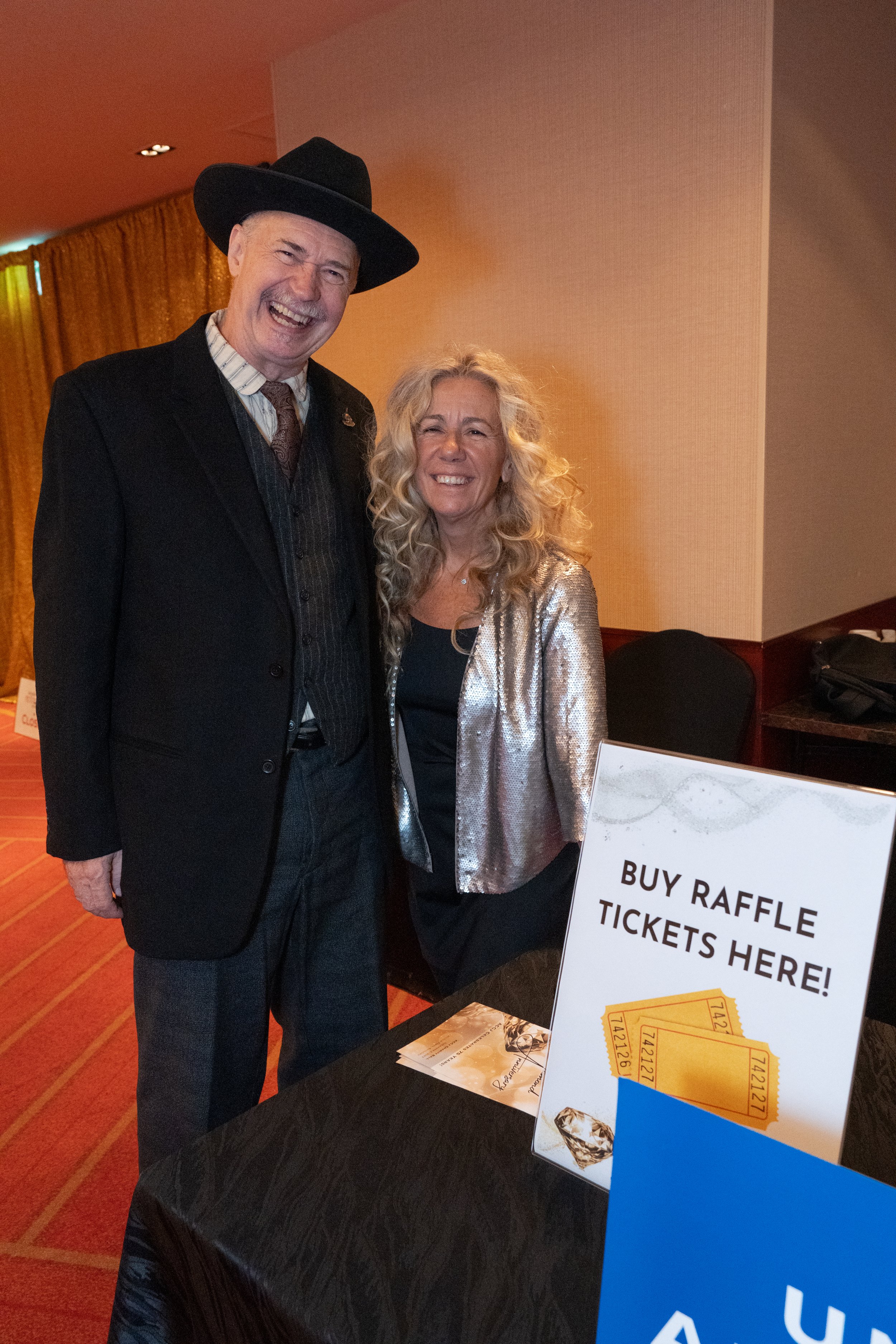
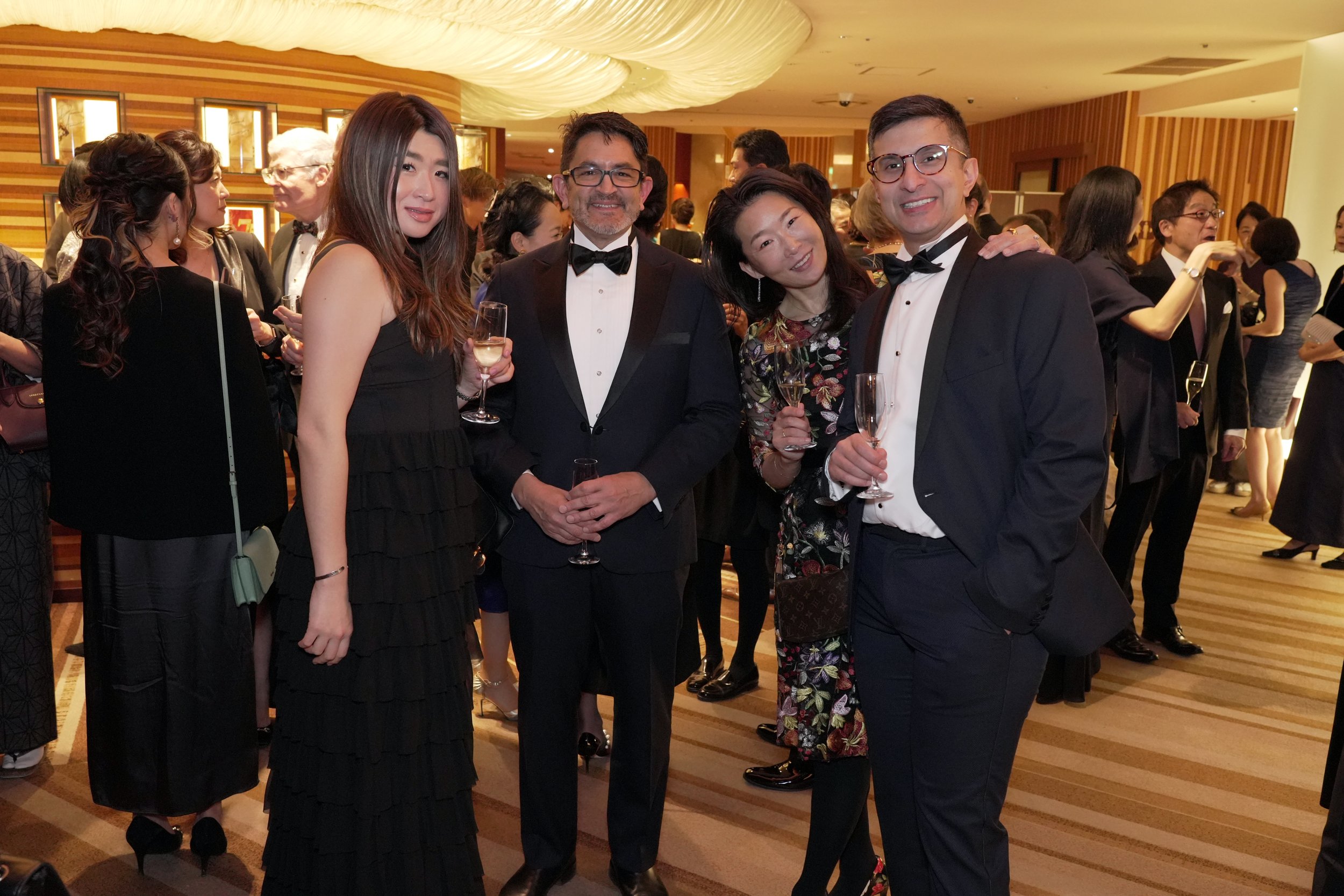
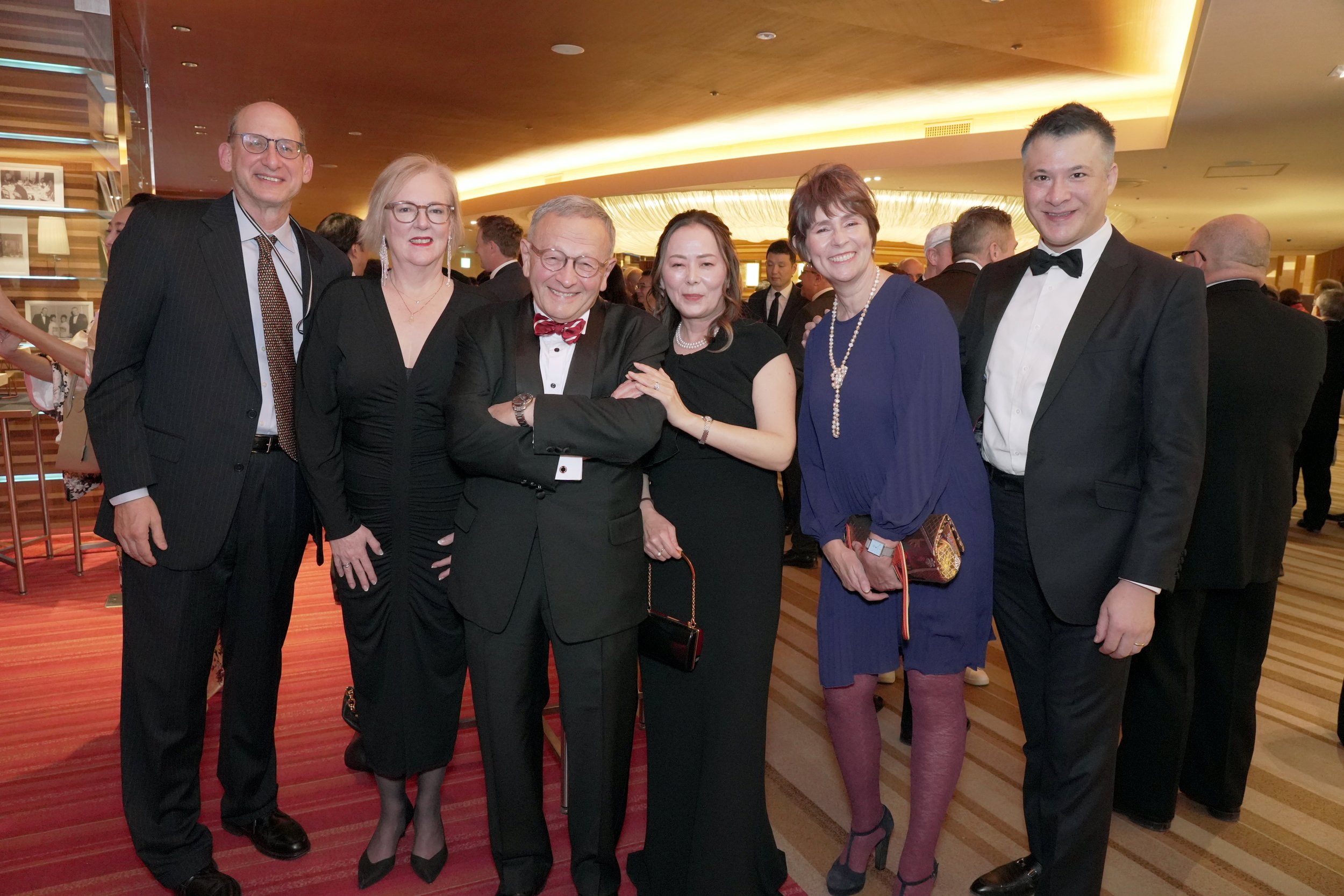
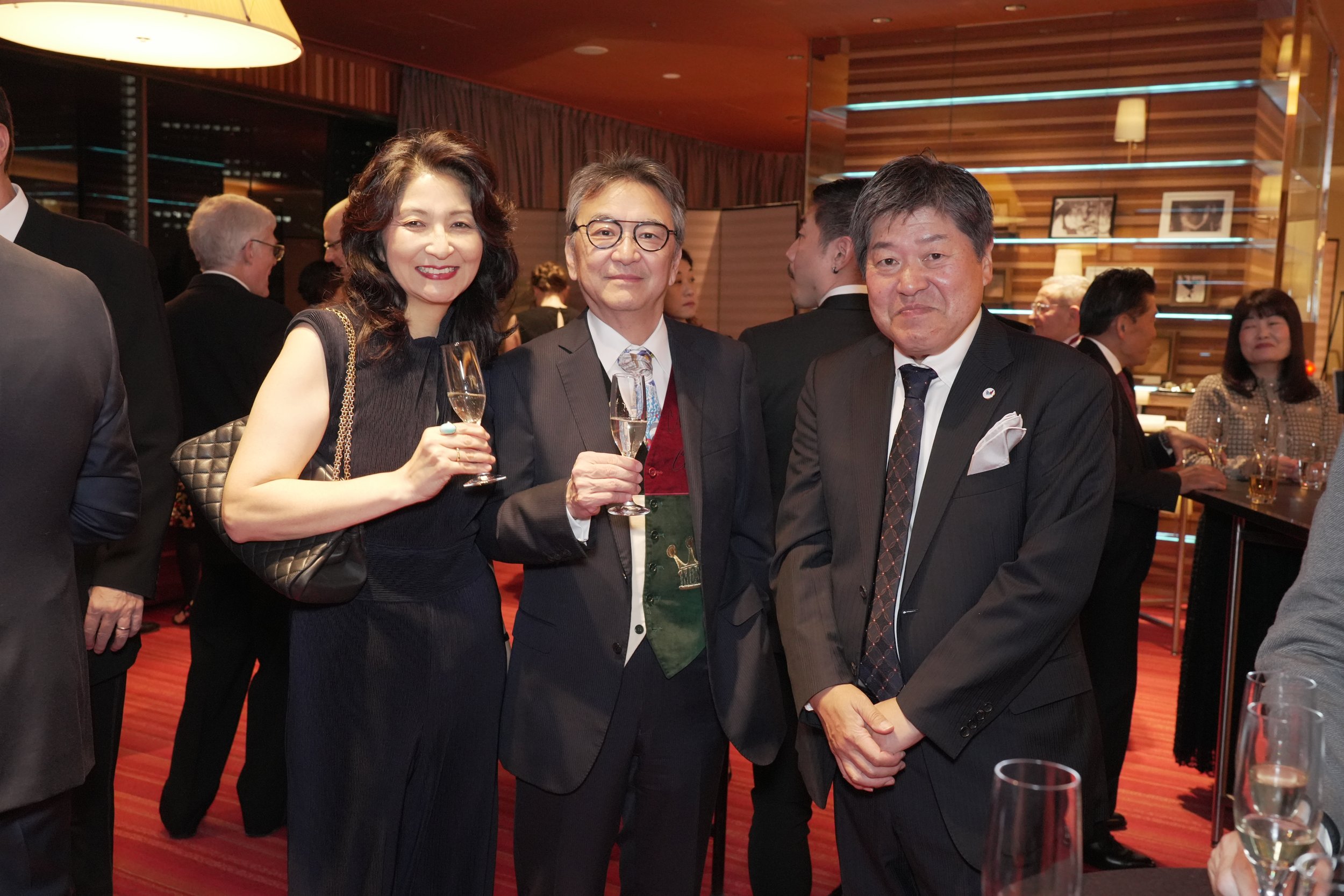
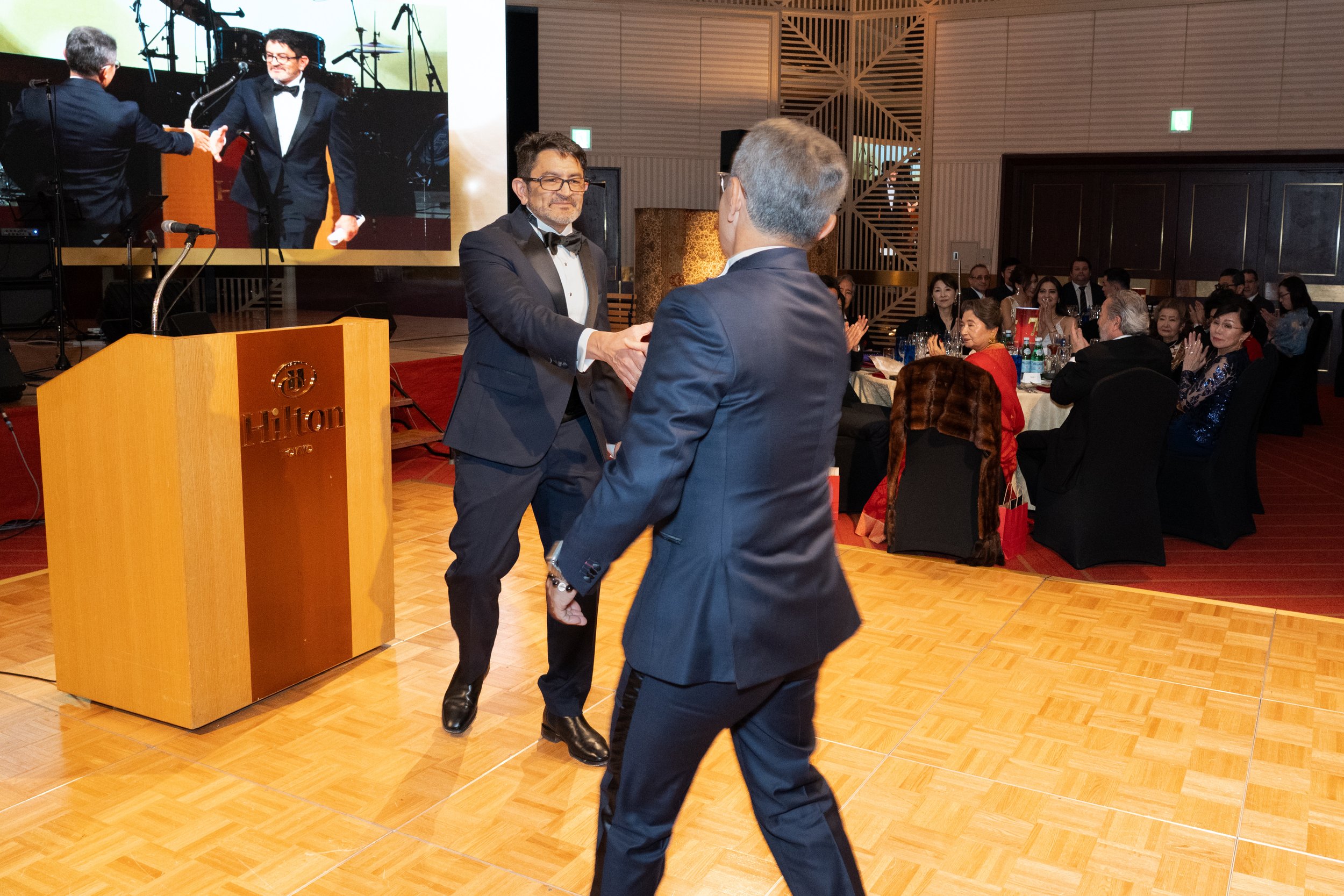
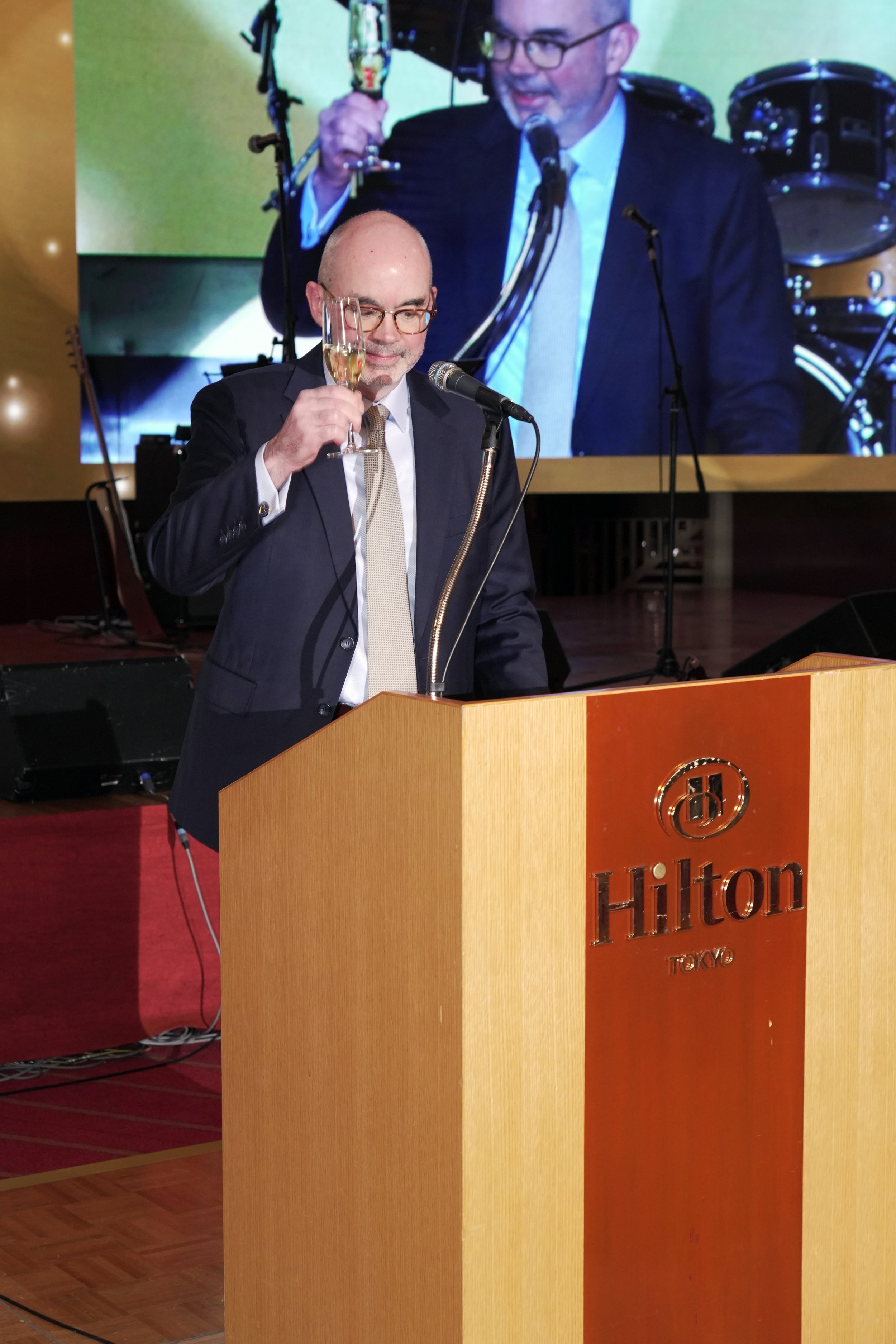
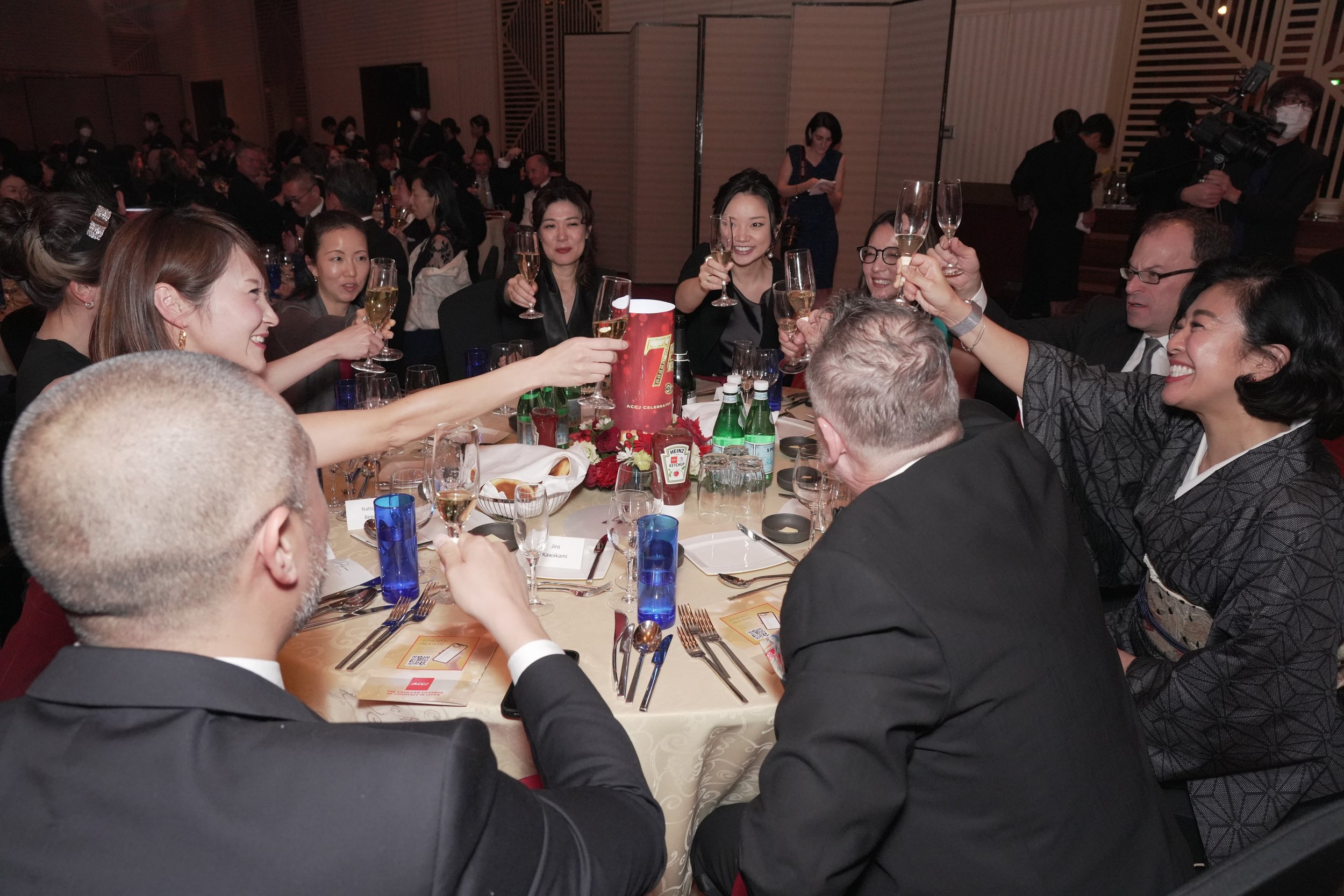
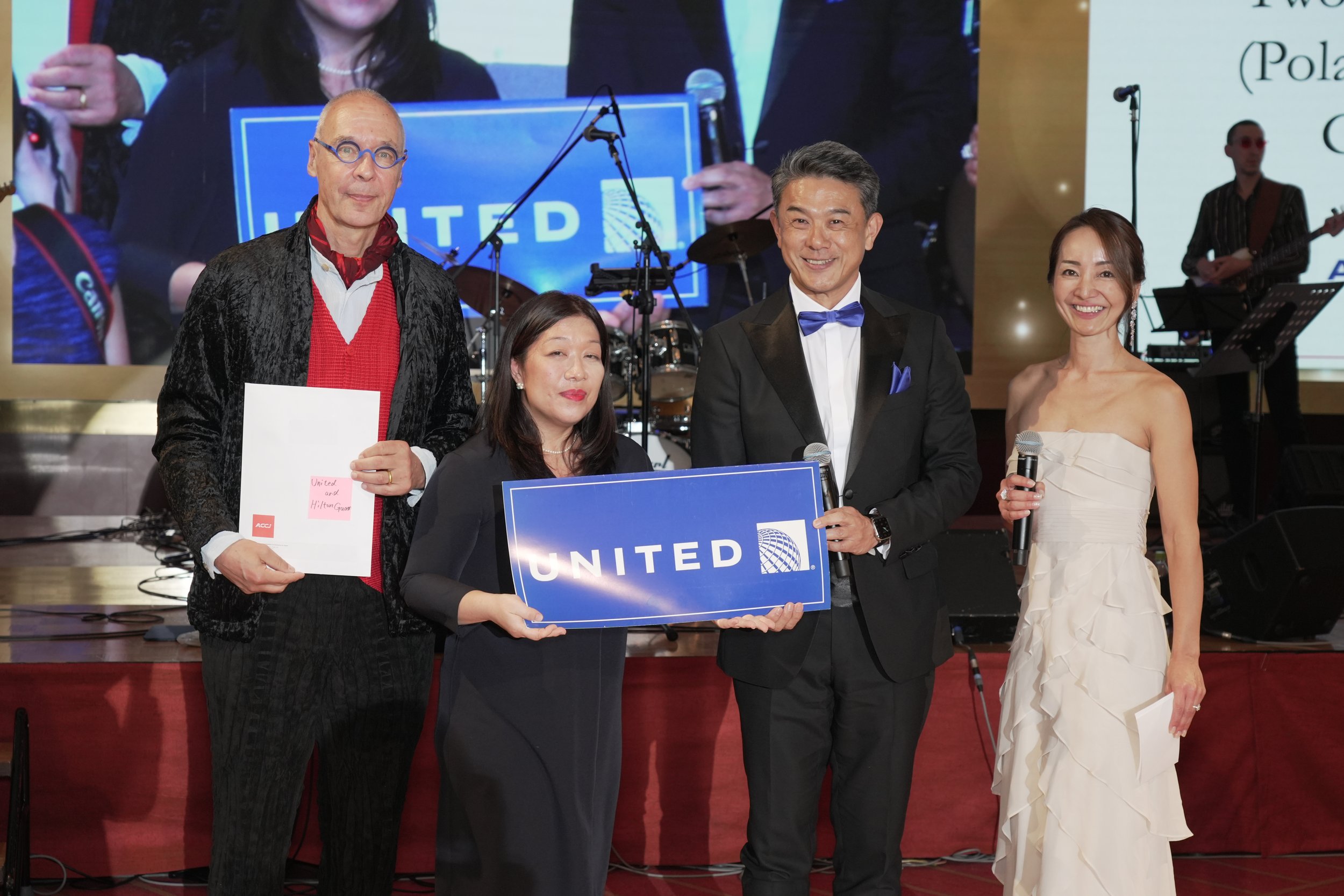

Photos: Media Sense K.K.
Legacy of Giving
The Charity Ball is not only one of the biggest events on the annual social calendar, it is also one of the ACCJ’s most important fundraisers. The money raised during the event is key to the chamber’s ability to support the community and help those in need.
The Charity Ball Committee works closely with the ACCJ Community Service Advisory Council to activate this effort with the generous participation of member companies and the membership at large. The annual Charity Ball is a time when we come together to share our success in Japan with each other and, at the same time, generate funding for charities qualified by a rigorous process.
This year we are proud to support the Mike Makino Fund for the Homeless, Food Bank Kansai, and the ACCJ Community Service Fund. We will also contribute to charities that help at-risk children, families, children’s hospitals and homes, and programs for these children.
“The ACCJ has a well-rounded mission that includes not only networking, information sharing, and advocacy, but also constructive engagement with the community.”
Together with the ACCJ staff, the Charity Ball Committee—Barbara Hancock, Kevin Naylor, Ryan Watson, Tomomi Fujita, Sonia Dhillon Marty, and William Titus—worked diligently to organize the event.
But success would not have been possible without the invaluable support of our generous sponsors, enthusiastic attendees, and the many individuals who took part in our online raffle and auction.
The committee extends its deepest gratitude to our sponsors and the ACCJ community for making a big difference in our ability to help those in need. We are grateful to each and every person involved, and extend a huge thank you to all!
President’s Circle Sponsor
Platinum Sponsor
Aflac
Bronze Sponsors
AIG Companies in Japan
Chevron International Gas Inc. Japan Branch
Prudential Holdings of Japan, Inc.
Silver Sponsor
Boeing Japan K.K.
Coca-Cola (Japan) Co., Ltd.
Mercury Sponsors
Morgan, Lewis, & Bockius LLP
NRK Sogo Kikaku Co. Ltd.
Prize Sponsors
Diamond
Air Canada
CIC Toranomon G.K.
Delta Air Lines
Hakuba Hotel Group
Herman Miller Japan, Ltd.
Ichijiku
KPG Hotel & Resort
Kraft Heinz Japan
Marriott International, Inc.
MediaSense K.K.
Ratko Back Painting
The Peninsula Tokyo
United Airlines, Inc.
Vega Project K.K.
Ruby
Grand Hyatt Tokyo
Hilton Nagoya
Park Hyatt Tokyo
There’s No Accounting for Taste
Sapphire
Amway Japan G.K.
ELC Japan K.K. (Estée Lauder)
Fukushima Garo
Good Morning Tokyo Co., Ltd.
Hakkaisan Brewery
Moegi
Simon Dalby Art
Tokyo American Club
Emerald
Andaz
Asian Tigers Japan
Conrad Tokyo
DevilCraft
Eastern Carpets
Elana Jade
Godiva Japan Inc.
grapeoff
Hilton Osaka
Hilton Tokyo
Hilton Tokyo Bay
InterContinental Osaka
Japan Design Collective
Jupiter International Corporation
McLarty Associates
Minamiaoyama7chome Gyoseishoshi Office
pearls.jp
Riedel Japan
Shop Japan
Takata Co., Ltd.
The Strings by InterContinental Tokyo
Temple University Japan Campus
Yellow Toes Art Gallery
Serene Shrines and Sauruses
As a tourist destination for inbound visitors, Fukui Prefecture often gets short shrift, especially compared with more glamorous neighbors such as Kyoto and Ishikawa Prefectures. But this may start to change when the Hokuriku Shinkansen adds Fukui, Tsuruga, Awara Onsen, and Echizen Takefu Stations to its pit stops in March 2024.
Fukui Prefecture offers crafts, fossils, relaxation, and so much more.
Presented in partnership with Fukui Prefecture
Photos by Florentyna Leow
As a tourist destination for inbound visitors, Fukui Prefecture often gets short shrift, especially compared with more glamorous neighbors such as Kyoto and Ishikawa Prefectures. But this may start to change when the Hokuriku Shinkansen finally adds Fukui, Tsuruga, Awara Onsen, and Echizen Takefu Stations to its pit stops in March 2024.
For now, Fukui’s sightseeing spots remain relatively quiet and uncrowded, making it an ideal road-trip destination for those with a little more time to spare. Our visit this fall takes us around the cities of Katsuyama, Awara Onsen, and Echizen—all of which yield rich rewards for the visitor willing to rent a car and take the wheel.
Mossy Matters
Gently sloping and meandering, the stone path to the main building of Heisenji Hakusan Shrine is flanked by towering cedars. It is serene, save for birdsong; few visitors are here on a weekday morning. The mid-morning sunlight filtering through the canopy casts dappled patterns of light and shadow on the velvety green moss blanketing the ground, yesterday’s rain heightening the dewy verdure. It’s so absurdly beautiful that I almost want to curl up on the moss and never leave.
However, if you ask historian and resident head priest Hiraizumi Takafusa, the gorgeous mosses on the shrine precincts aren’t the be-all and end-all of these grounds. “It’s not like we promote this place with its moss. We supposedly have over 200 types of moss,” he says. “I can recognize only 20 of the varieties.” According to Hiraizumi, the history of the shrine and the surrounding area are the true highlights.
Located on the edges of Hakusan National Park in what is now Katsuyama City, Heisenji Hakusan Shrine was established as a Buddhist temple in 717 by a monk named Taicho. For centuries, it operated as both Shinto shrine and Buddhist temple—as was common practice prior to the Meiji Restoration—and served as a base for pilgrims making their long, arduous way on foot to the sacred mountain of Hakusan.
At its peak, thousands of monks lived on the precincts, which were about 10 times the size of the present-day sprawling shrine complex. It’s mind-boggling to consider. It will surprise no one familiar with Japanese temple architecture that the complex burned down in the 16th century and was subsequently rebuilt.
The formal separation of Shintoism and Buddhism in the 1870s meant that it became a Shinto shrine first and foremost. However, its name points to vestiges of its Buddhist ties from centuries past—it is a rare instance of a Shinto shrine whose name ends in -ji, meaning “temple.”
The shrine has much to offer history buffs, especially when paired with a visit to the more famous Eiheiji Temple, about 40 minutes away by car. But even without a deep interest in Japanese history, the beauty of this shrine complex alone is mesmerizing enough to warrant an hour or two spent strolling around the grounds. I could happily spend that long peering at feathery mosses, watching long-legged spiders and beetles navigate the moss-furred stumps and stone steps.
The shrine is best visited in spring, fall, or rainy season. Winter is beautiful, too, but perhaps impractical for a visit given the snowy conditions.
Coming of the Raptors
Ask the average Japanese person what Fukui is famous for, and there’s a high chance they’ll say dinosaurs. You could point to any number of reasons for this. For example, many of the dinosaur fossils discovered in Japan were found here. Six new species were identified in (and named after) Fukui: Fukuisaurus tetoriensis, Koshisaurus katsuyama, Fukuiraptor kitadaniensis, Fukuititan nipponensis, Fukuivenator paradoxus, and Tyrannomimus fukuiensis. And, Katsuyama City is home to the world-class Fukui Prefectural Dinosaur Museum (FPDM), which is also an institution dedicated to ongoing dinosaur research and education.
But really, the main reason everyone associates Fukui with dinosaurs is that the area leans hard into being the self-styled Dinosaur Capital of Japan. Dinosaur motifs are everywhere in Fukui: themed restaurants, hotel rooms, playgrounds, stationery, hand towels, and even regular road signs. You’ll find huge dinosaur animatronics outside Fukui Station (they sport Santa hats in winter) and Dr. Raptor on a bench inside. One of the prefectural mascots is a green dinosaur, Rapt-kun, named after the fukuiraptor. I should stress that all this is mostly delightful, rather than gimmicky.
Unsurprisingly, the FPDM is beloved by locals and out-of-prefecture visitors alike. It’s so popular that you’ll see a flashing sign board en route to the museum asking whether you’ve reserved your tickets, which tend to sell fast during summer vacation and major public holidays. The museum even fills up some weekdays.
In truth, I’ve never been interested in dinosaurs, but the FPDM does an excellent job of conveying just how cool these ancient animals are. The main hall is an impressive start to the museum. In a domed exhibition space crammed with dioramas, fossils, and full-body dinosaur skeletons—10 of the 50 specimens on display are actual fossils—I spent a fair amount of time staring at the all-too-realistic T-Rex animatronic glaring ferociously at all of us. If this is what our prehistoric ancestors had to contend with, I am happy to be living in modern times.
As befits one of the world’s leading dinosaur museums, the FPDM has clearly invested in competent translators: the English-language captions are well done, if a tad dry. Plus, it’s fascinating to see how giant raptors evolved into tiny birds over millions of years. It’s well worth spending a few hours here, even more so if you have kids in tow. A shopping spree at the museum’s 100-percent dinosaur-themed gift shop is optional but thoroughly encouraged.
A Bath of One’s Own
Located in what feels like the middle of nowhere (although just a short drive from the Tojinbo Cliffs), Awara Onsen is one of Fukui’s only hot spring towns of note, famous for its healing waters and local cuisine.
We spent the night at the historic ryokan Haiya, whose name translates to House of Ash, a tribute to the craftspeople who produced fine ash used in dyeing clothes worn by Kabuki and Noh theatre actors. The unintentionally amusing name notwithstanding—Uncle Roger would have a field day—Haiya is a ryokan I’d spend several nights in every month if I had the time and money.
Built in 1884, the inn sprawls over three buildings with a total of 43 rooms. The property retains its Meiji-era architectural trappings—along with modern updates like Wi-Fi and coffee machines—and is large enough that a map might almost come in handy for finding one’s way in the maze of winding corridors. All rooms in the original 1884 Shofuan Annex and the recently renovated Kangetsutei Suites, and most of the rooms in the Jurakutou Building, have traditional Japanese garden views.
According to the inn, the room assigned to me—Korin (光輪), meaning “halo” or “nimbus”—was named by Prince Takamatsu. I have no way of verifying this, but the name certainly suits the space with its high ceilings, intricate latticework on the sliding doors, tasteful tableware, 16 tatami mats of space (for up to six people), a private moss-covered garden, and outdoor cypress bath. Best of all, I have it all to myself. Perfect for pretending to be a wealthy writer on sabbatical.
Food and baths are the real draw at most ryokan, and Haiya is no exception. The kaiseki dinner was a leisurely, two-hour affair, a parade of little dishes showcasing freshly caught seafood from the Sea of Japan and produce from the nearby Sakai Plains.
Two highlights from dinner: One, a whole live abalone cooked jigokuyaki-style, or “hell-grilled,” right in front of you until it stops moving. Bouncy yet tender and ocean-fresh, this style of abalone is not for the squeamish. The other, okami’s sake purin, a creamy pot of custard made ever more beguiling with its undertones of boozy umami. To our dismay, this is not a year-round staple, but a seasonal dessert. The idiom “ichigo ichie,” or “for this time only,” has never felt so salient and cruel. (More reason to plan a return trip next October.)
But it’s Korin’s cypress bath I keep coming back to in my mind. Before I checked out, there was a moment where a shaft of sunlight pierced the gap in the bamboo screens in front of the bath just so, illuminating wisps of steam curling up from the surface of the hot water. There was something simple yet transcendent about all these elements coming together for a few minutes before the sun moved on.
The Pleasures of Pottery
In addition to crafts like making washi paper and knives, Fukui is also known for its pottery: Echizen-yaki, or Echizen ware. Notable for its understated coloring, and usually being fired sans enamel, this type of pottery centers on one of the Six Ancient Kilns of Japan, the others being Seto, Tamba, Bizen, Tokoname, and Shigaraki.
Echizen ware is, in fact, a recent term. According to the permanent display at the Echizen Old Kiln Museum, it was coined by the researcher Kuemon Mizuno and Fujio Koyama between 1942 and 1945 as a way to group a number of disparate pottery styles local to the region under a single categorical umbrella. Perhaps unintentionally, this seems to parallel the municipal mergers of the Meiji Era, where many villages and hamlets were amalgamated into new or existing cities.
Both the Old Kiln Museum and the Fukui Prefectural Museum of Ceramics (FPMC) next door have much to offer the ceramics lover by way of exhibitions and beautifully made pieces to add to one’s suitcase. There’s also a traditional teahouse and garden where you can sip on green tea from Echizen ware. But there’s nothing quite like getting your hands dirty to appreciate, on a visceral level, the craft that goes into a piece of pottery.
My visit to the FPMC included a workshop using the electric potter’s wheel. The task was to shape a vessel—anything I wanted, as long as it had a mouth. I had 30–90 minutes. As seems to be true of all craftspeople, ceramicists make their craft look easy when it is anything but. It’s more challenging than it looks to maneuver a solid, spinning hunk of clay. Too little pressure and nothing happens; too much pressure and all hell breaks loose. (Here’s a life lesson: never wear a nice white shirt when taking a ceramics workshop.)
Fortunately, there was a skilled staff member on hand to guide my hands and help fashion the clay into something vaguely presentable. Unless you’re a quick learner, it’s not possible to master the electric potter’s wheel in a single session. It takes practice and more than a little intuition. More saliently, using the wheel is hell on your lower back.
If your work primarily involves a computer, as mine does, it’s easy to forget the pleasures of creating something with your hands, no matter how messy or clumsy the result. Taking a ceramics workshop at a place like the FPMC is a great way to reconnect with the physical world. Reservations here are mandatory, particularly if you’d prefer instruction in English (there are only two English-speaking members on staff). For those living in Japan, they’ll fire and mail the finished piece to you for an additional fee.
Lustrous Lacquer
The Echizen Lacquerware Hall is not somewhere you’d chance upon unless you were looking for it. Located in Sabae City—these days more famous for spectacles than anything else—this unassuming building is all too easy to drive past. Of course, this would be a waste, since it’s a fine place to view superb examples of lacquerware, watch artisans make lacquer magic, shop for lacquerware, and even try out various types of lacquer art for yourself, from applying lacquer to plain wood or painting already-lacquered wood.
This was the final stop on our two-day tour; we were there for the chinkin experience. Briefly put, this involves carving a design onto a lacquered surface, applying a thin layer of lacquer into the engraved lines, then covering it with gold dust or leaf. You then take your finished work home. How difficult could this be?
As the saying goes, these were famous last words. After tracing a motif of your choice onto a lacquered surface—I foolishly chose a detailed crane drawing—you then use a spindly metal chisel to gouge out the lines you’ve drawn, scraping away from yourself in a single direction. Engraving is not at all like drawing; my lines were nowhere as precise as I wanted them to be. Those with fine motor skills will have a better time of it.
I had never thought much of lacquer as a craft, but I gained a newfound respect for lacquer artisans that day. Having tasted a little of what it’s like to carve a design, the exquisite details on the lacquerware on display at museums and exhibitions have taken on more weight and meaning. These days, my clumsily carved crane plate sits on my dining table, reminding me not to take for granted the craft behind beautiful handmade things.
Learn more and plan your visit …
Heisenji Hakusan Shrine
Fukui Prefectural Dinosaur Museum
Haiya
Fukui Prefectural Museum of Ceramics (Japanese only)
Echizen Lacquerware Hall
Japan Unlocked
Looking to enter the Japan market? Want to improve your existing operations? As part of Kreston Global, the world’s 13th-biggest accounting network and 10th-biggest in Japan, Kreston ProWorks helps companies establish a foothold in Japan.
Kreston ProWorks opens doors with local expertise and global reach.
Kreston Global, the world’s 13th-biggest accounting network in terms of revenue according to UK-based trade magazine International Accounting Bulletin (IAB), is now the 10th-biggest in Japan per the IAB, up one spot from the year before.
With 160 independent member firms and 25,000 experts across 750 offices in 115 countries, Kreston Global provides unparalleled access to a wealth of international resources and expertise.
There are three member companies in Japan. Two provide audit services and the third, Kreston ProWorks, offers a full slate of inbound accounting, payroll, tax, and corporate services.
Established in 2007 by Marek Lehocky, the firm has built a strong reputation as an indispensable partner for companies looking to enter the Japanese market. “Our mission is to make setting up and operating businesses—including immigration, accounting, payroll, labor, and tax compliance—as easy as possible in Japan, so our clients can focus on building their business,” Lehocky told The ACCJ Journal.
Full Slate of Services
Kreston ProWorks delivers a nimble team of bilingual experts with intimate knowledge of how processes in Japan differ from those in other countries. Specialists in inbound accounting, tax, payroll, and human resources, Kreston ProWorks offers a much wider range of services than other companies:
- Company formation and corporate services
- Employer of record (EOR)
- Immigration and business license support
- Legal and transactional support
- Nominee representative
- Virtual office services
- Market entry and business consulting
EOR, for example, is especially helpful, as it allows companies to come in for a short time and deploy resources quickly to complete a specific project. It is also a way to test the waters when considering Japan market entry without investing in a full move.
“With all the requirements and steps involved, it can take at least seven or eight months before people can come into the country,” Lehocky said. “We can cut that to just three or four months with foreign employees and a few weeks with local hires.”
Local Knowledge Matters
Just as understanding the local market is key to a business’s success, so are local operations. While many companies provide services offshore, Kreston ProWorks does everything in Japan.
“Clients want to have closer proximity to Japan, because Japan is a black box of sorts, and they want to make sure that the people who are handling their operations actually understand the intricacies and nothing is being lost in translation,” Lehocky explained. “We act as our clients’ internal team of experts and ‘goalkeepers’ for each of the service areas that we provide. We stay on our client matters and drive the parts that we are in charge of so our clients can focus on other parts of their business. Communication and getting things done is a key to success.”
If you are interested in exploring market entry or are already here and wondering if you are doing everything the right way, Lehocky invites you to get in touch.
“Reach out,” he says. “We would be happy to arrange a time to introduce ourselves and get to know you and your needs. You always have alternatives.”
Get in touch today for a free consultation:
Carla Willmes, business growth and communications lead
cwillmes@krestonproworks.com
03-4520-5530 • www.krestonproworks.com
The Hunt for DX Champions
Despite being a nation renowned for assimilating advanced machinery and technology into everyday life, the reality of Japan’s IT workforce paints a very different picture. But Robert Half Japan is supporting clients undergoing digital transformation and is seeing promising progress.
Japan faces an uphill climb when it comes to digital transformation.
From left: Marcus Aakerholm and Lyndsey Hughes (Photo: Shelley Mae Photography)
Despite being a nation renowned for assimilating advanced machinery and technology into everyday life, the reality of Japan’s IT workforce paints a very different picture.
According to a survey of companies conducted by the Ministry of Internal Affairs and Communication, Japan’s information and communication technology (ICT) sector is falling short when it comes to digital transformation (DX). This is largely due to a lack of qualified technology talent. In 2018, there was a shortage of about 220,000 ICT workers, and the shortfall is expected to reach 450,000 by 2030.
At the same time, Japan’s economic landscape is experiencing a generational shift, influenced by new government policies and changing regulations designed to elevate the country to the global DX standard.
Slow Road to DX
Robert Half Japan supports clients undergoing digital transformation and is seeing promising progress.
“In many Japan-headquartered global companies, the pace of change has tended to be slow and incremental,” said Managing Director Lyndsey Hughes. “But this has started to shift over the past few years and momentum is building.”
“Even prior to Covid-19, we had started to see signs of large Japanese corporations incorporating their DX agenda into their corporate vision and hiring ‘disruptive’ senior executives from outside the organization—even from outside Japan—to expedite transformation,” he said. “It seems now there really is an appetite and a glimmer of commitment from corporate Japan to transform their global businesses.”
The 2022 IMD World Digital Competitiveness Ranking ranks Japan 29th out of 64 countries examined in terms of know-how, development of digital technologies, and preparedness to exploit digital transformation. Asian countries finishing ahead of Japan include South Korea (8th), Taiwan (11th), and China (17th).
Hughes noted that many companies have been stalling in their DX initiatives, often because they lack real commitment from the top, face resistance from middle management, or are short of know-how on how to manage global functions. They may also struggle to attract, and appropriately compensate, ‘new’ skill sets to implement the change.
DX touches every area of an organization, he explained, and while every company faces its own unique set of challenges, there are consistent themes that Robert Half is hearing from its customers. These include overhauls to human resources policies to adopt pay-for-performance compensation to attract specialized talent.
Robert Half is seeing companies start to take diversity, equity, and inclusion initiatives seriously, and many are ready to pay higher agency fees to prioritize the scouting of female talent as well as hiring, and even importing, more foreign talent. And while there is still a long way to go to embrace all types of diversity, at least the conversations have started, Hughes said.
In addition, large Japanese companies are beginning to move away from in-market IT to globally distributed IT functions that allow them to benefit from scale, respond more quickly to market changes, and mitigate cybersecurity risks.
There has also been a surge in the hiring of chief data officers to centralize data and analytics expertise, as well as breaking down data silos and harnessing the power of data across an organization.
Too many companies are entering uncharted DX territory, Hughes pointed out, and often lack the skills and expertise to deliver on such projects. This is where Robert Half and its business consultancy subsidiary, Protiviti, come in.
Helping Hand
“At Robert Half Japan, we have a strong focus on placing bilingual technology talent with foreign affiliates in Japan to bridge with their HQ, or to global Japanese firms looking to bridge their overseas subsidiaries,” explained Marcus Aakerholm, division director of business transformation. “As an enterprise, we have a unique capability to support DX initiatives in different ways, whether by placing permanent employees across various functions, specialist contractors to jump into different projects, or through Protiviti.
“In many cases, we offer a tailored and blended solution of outsourced consulting assignments combined with project contractors and permanent resources,” he added. “This allows us to respond flexibly to the fluid and diverse needs of our customers, across their global operations.”
Aakerholm has witnessed firsthand the unique market conditions affecting DX in Japan.
“A typical scenario for our team is assisting foreign-affiliated organizations that need to undergo a corporate-wide system update,” he said. “In these cases, the US office will send an internal team to implement the changes but, due to the unique market requirements here, their efforts are rarely implemented or understood by domestic teams. Our bilingual project managers and functional experts bridge that gap.”
Robert Half supports many Japan-headquartered clients that require bilingual talent with subject matter or technology expertise to interact with overseas subsidiaries.
In one example, Aakerholm’s team helped a global media company by bringing in a specialist consultant with the required language abilities, project management skills, and knowledge of system implementation to complete the introduction of finance modules of the Workday system.
Look Within
“When a company needs to evolve, it’s not just about bringing in new people,” said Hughes. “Organizations also need to create a culture of internal evolution so they can continue to adapt to changes in the market, customer needs, and so on.
“Generally, organizations think in functional silos, and those silos are often lacking a specific skill set,” he said. “But those skill sets may exist elsewhere in the organization. There are all sorts of capabilities floating around in every company, perhaps in a different function or a different market, so there isn’t necessarily a need to rush out and hire quickly.”
Smart leaders are adept at unearthing the hidden potential in an organization, he added, and creating an environment of empowerment to enable the enablers.
One Robert Half client innovated by introducing a “chief future officer” role and invited a relatively new hire to join the company’s transformation steering committee, alongside senior leaders from across the business, to bring a fresh perspective and add a new voice.
“People new to the organization often have the clearest minds to and come up with innovative solutions,” Hughes said. “Younger generations want their voices to be heard, to feel they are contributing, so tapping into their passion and capabilities is very important and can be a key catalyst for successful DX.
“Often, a manager thinks the candidate they need is a reflection of who they are and their own skills,” he said. “But they need to identify where they and their organization are coming up short and then find the person to fill that gap.”
The deficiency might be a hard skill set, such as expertise in a new technology stack or building global enterprise architecture standards, but it might also be the ability to champion new ways of doing things, exposure to different industries, or diversity in hiring to bring in better creative problem-solvers.
“I believe leaders need to be deliberate in understanding the current skill, personality, and knowledge gaps,” Hughes said. “And then ask themselves what their team members can do to help drive the transformation, what unique talents can they bring to the table.”
Register now to learn, connect, and get inspired by Robert Half Japan networking events: roberthalf.jp
Synthetic Savants
Since the introduction of consumer-facing artificial intelligence applications such as ChatGPT and Google’s Bard, generative AI has transformed how people work around the world. How might it impact specific industries in the years to come?
As generative AI sweeps the world, how will it transform the way we work and innovate?
We live in an age of intelligent machines. Since the introduction of consumer-facing artificial intelligence (AI) applications such as OpenAI’s ChatGPT and Google’s Bard over the past year, generative AI has transformed how people work around the world.
From $40 billion in 2022, the market size for generative AI will balloon to $1.3 trillion over the next 10 years, according to Bloomberg Intelligence. First popularized through image generators, the technology has been applied in fields ranging from neuroscience to advertising, sometimes in surprising ways.
Generative AI programs like the large language models powering ChatGPT are trained on enormous volumes of data to sense patterns and predict how they will play out in a piece of content. These models can be trained on linguistic, financial, scientific, sensor, or other data—especially data that is uniform and structured—and can then create new content in response to user input. They have had remarkable success, particularly in image and text generation, and have seen rapid uptake in sectors ranging from education to computer programming. “This technology is set to fundamentally transform everything from science, to business, to healthcare … to society itself,” Accenture analysts enthused in a report. “The positive impact on human creativity and productivity will be massive.”
Powerful New Assistants
Generative AI first gained public attention thanks to its ability to change how we communicate through words, images, and video. It’s no wonder, then, that the world’s largest public relations company has embraced it. Edelman worked with OpenAI to launch the original ChatGPT-2 and delivered the first application in an ad campaign. In the spots for Hellmann’s Mayonnaise, the tool is tasked with finding new ways to use leftovers.
Edelman believes the technology will reconfigure the communications industry, but it won’t replace human ingenuity, strategic advice, and ethical decision-making that builds trust, said Meghan Barstow, president and representative director of Edelman Japan.
“We predict that AI will become an essential assistant in our work, helping to brainstorm, research, summarize, trend spot, monitor media, and generate content, among other tasks,” explained the ACCJ governor and chair of the chamber’s Communications Advisory Council. “The emphasis here is on ‘assistant,’ as we believe there will always be a human in the loop, that AI and people working together will provide the most effective and valuable work output.
“As with any technology, there are risks that require appropriate caution, education, processes, and policies to ensure the safe and trustworthy use of generative AI to protect our work, our clients, and end users from issues related to disinformation, bias, copyright infringement, and privacy.”
Similarly, lawyers such as Catherine O’Connell are also using generative AI as smart assistants. O’Connell is principal and founder of Catherine O’Connell Law and co-chair of the American Chamber of Commerce in Japan (ACCJ) Legal Services and IP Committee.
After taking a course on how to get the most out of ChatGPT, she has been using it for writing keynote speeches, article outlines, posts on social media, and skeletons of presentations. She compares the tool to a human intern, and praises its time-saving efficiencies, but warns that it should not be used for legal work, such as contracts or legal advice. Attorneys in the United States, she noted, have found themselves in trouble after producing legal filings referencing non-existent cases that generative AI simply made up.
“Generative AI is like a teenager that has a lot of promise but has not learned how to be a whole professional yet; it needs guidance,” said O’Connell. “However, in terms of an idea generator or idea expander, a time-saving device, and an assistive tool, generative AI is an asset. The rest falls to me to add my human touch to check and verify, to add my own personality and insights only I have, and to make the output my very own. I think generative AI is so good that its cousin, Google search, may be out of a job sometime soon.”
Smart Tools for Talent
Recruiting is another industry in which workers deal with mountains of structured data, in the form of resumes and online posts, that can be utilized by AI. Robert Half Japan, an ACCJ Corporate Sustaining Member company, uses a system called AI Recommended Talent (ART) to match resumes to client needs. The system speeds up matching for job hunters and employers, allowing staff to spend more time with clients.
“The real power of generative AI is how much it can integrate with our existing systems,” explained Steven Li, senior division director for cybersecurity. “We are piloting ChatGPT-4 integration in our Salesforce CRM. Studies have shown benefits from integrating generative AI into workflows. Other industry examples that highlight the benefit of integration include the GitHub CoPilot generative AI feature.”
The effectiveness of AI in recruiting has led some people to speculate that it could render many human recruiters obsolete. Deep learning algorithms are figuring out what a good resume looks like, and generative AI can craft approach messages and InMails, a form of direct message on the popular LinkedIn platform, noted Daniel Bamford, Robert Half’s associate director for technology.
“However, the real value of agency recruitment is not, and never was, a simple job-description-to-resume matching service,” added Bamford. “Agency recruitment done well is a wonderful journey of problem-solving, involving the goals of organizations and teams and the values and desires of individuals. Excellent recruiters will thrive. They will use AI’s capacity to handle simple tasks like scheduling and shortlisting. This will free up time for high-value interactions, delivering even greater value for their partners and industries through the human touch. The future of excellent recruiters will be brighter with AI’s support.”
Tracking Ships and Patients
Even a traditionally hardware-oriented industry like logistics is being transformed by generative AI. Shipping giant Maersk is using a predictive cargo arrival model to help customers reduce costs with more reliable supply chains. It also wants to harness the power of AI to recommend solutions when shipping routes are congested, advising on whether goods should be flown or stored, and better understand the sales process, Navneet Kapoor, Maersk’s chief technology and information officer, told CNBC.
Maurice Lyn, head of Managed by Maersk for Northeast Asia, also sees great potential in the technology. “The biggest changes that I foresee will be related to the enhanced visibility into, and agility of the management of, the global supply chains of our clients on an execution level,” he told The ACCJ Journal. “The data aggregated will allow logistics service providers [LSPs] to deliver predictive and proactive solutions to our clients. If clearly interpreted by the LSPs, stability and uniformity of costs and deliverables will be provided globally and locally to our clients.”
Generative AI may even help us live longer, healthier lives via long-term patient monitoring. Sydney-based medical AI startup Prospection recently launched its first generative-AI model in Japan to analyze anonymized patient data for pharmaceutical companies so they can better understand patient needs. A Japanese drug company, for instance, could look at cancer patient outcomes across the country and find that they are slightly worse in a particular region, possibly because less-effective drugs are prescribed there.
Founded in 2012 and operating in Australia, Japan, and the United States, Prospection now has data on half a billion patients. For the first 10 years, it was using traditional AI methods, but generative AI has opened new services for the company. Users can query Prospection’s AI services about typical pathways for patients who took a certain drug, or what therapy they underwent after quitting the medication. A Prospection model can predict whether a patient will experience a certain event, such as needing to be hospitalized, over the next year.
“The ChatGPT transformer model is trained on billions of sentences consisting of words. We see each patient’s journey as the sentence and events in the journey as the words. That’s the vocabulary,” said Eric Chung, co-founder and co-CEO of Prospection. “The data is very powerful. There are lots of insights to be gained from data on 500 million patients. It’s beyond the power of humans to analyze, but AI can do it.”
Renewable Ambitions
Japan has detailed ambitious plans for the wider deployment of renewable energy sources throughout the economy. Yet energy experts caution that Tokyo is unlikely to reach those targets unless policy changes are made.
Japan aims to mix up power, but are the targets achievable?
Japan has detailed ambitious plans for the wider deployment of renewable energy sources throughout the economy, with the government in October 2021 announcing the Sixth Strategic Energy Plan and setting a target of between 36 and 38 percent of the nation’s power coming from renewables in 2030.
That would be about double the 2019 level and significantly above the previous 2030 goal of up to 24 percent.
Japan’s target renewables mix would include up to:
- 16 percent from solar
- 11 percent from hydropower
- 5 percent from wind
- 5 percent from biomass
- 1 percent from geothermal
The contribution from nuclear energy was left unchanged, at between 20 and 22 percent. This will require a minimum of 30 reactors to be operational.
The targets tie in with the Clean Energy Strategy, unveiled by the government in May 2022, announcing an ambitious 46-percent reduction in greenhouse gas emissions in fiscal 2030 and carbon neutrality by 2050.
And, given the impact of instability involving Russia and in the Middle East, the two traditional primary sources of energy for Japan, combined with the yen at 10-year lows against other leading currencies, it would be in Japan’s best interest to dramatically reduce its reliance on imported energy.
Yet energy experts caution that Tokyo is unlikely to reach those targets as progress in the development of renewables has slowed, with fewer large-scale solar projects, delays in offshore wind generation, and local resistance hampering the acceleration of other technologies, such as onshore wind and geothermal power.
“Private capital markets are ready to invest in Japan, and both multinational and Japanese firms have developed technology and human resource pools to hit targets,” points out Andrew Statter, a partner at the Titan Consulting Group and head of its GreenTech division.
“However, policies and subsidies are unclear, and there are conflicts between ministries that are causing questions for investors while potentially profitable asset types, such as large-scale agrisolar, are not yet eligible for project financing,” he told The ACCJ Journal. “All of which puts a huge pause on the potential accelerated development that industry is ready to deliver.”
Japan needs to go beyond the “what” in its policies and clarify the “when,” “where,” and “how” to encourage investment, Statter said.
Favorable Winds
Turning to specific energy resources, Statter said offshore wind is critical as Japan has geographical and physical limitations on the volume of onshore renewables that can be developed. “With vast ocean resources, offshore wind is the ideal renewable technology which is proven and scalable to give Japan a shot at hitting renewable energy targets,” he said. “Key here is the need to accelerate floating offshore wind, as Japan’s waters become very deep quite close to shore.”
Statter also sees a secondary benefit to Japan’s expansion of floating technology. The country could become a technology exporter on a regional scale as Asia–Pacific markets embrace the technology.
Akira Amano, country manager of Invenergy Wind Development Japan GK, agrees on the importance of offshore wind to the nation’s overall energy goals, pointing out that “Japan has the right resources to become a global leader in renewable energy, especially offshore wind.”
He also concurs that significant challenges need to be navigated for the renewables sector to thrive.
“In order to accelerate progress and meet our nation’s goals, there will need to be long-term regulatory certainty, increased transmission capacity to deliver energy to customers, and long-term planning to address challenges like cost uncertainty.
Amano also noted that, with strong leadership, Japan can accelerate the build-out of clean energy and meet its energy goals in a timely manner.
Rocky Foundation
If the authorities are serious about making the most of offshore wind, Amano said, a number of regulations need to be revised, not least the unbundling of generation, transmission, and distribution at existing electricity utility companies to get rid of unfair competition. The sector also needs the authorities to increase the price for renewable energy certificates, he added.
Hideyuki Ohnishi, regional general manager for GE Renewable Energy in North Asia, agrees that Japan needs to make the most of its exclusive economic zone—one of the world’s largest—for offshore wind.
“The wind conditions, the speed and quality of the wind, is much better when you go to the seaside,” said Ohnishi. “In the mountains, there is turbulence and such, and average wind [speed] is not as strong. So, it is important for us to go to the places where we have better wind.”
Yet there are challenges, particularly in laying the foundations for turbines.
“We have to install big wind turbines in the sea, where the depth differs,” he explained. “Wave and seabed conditions have an impact. The geosurface is very important. Rocks and related conditions impact our design, and it’s not easy in terms of technology.”
Equally, the investment required to get the blades turning is significant, and projects must be considered in the long term.
The Japanese government is also pushing for 60 percent of the components in offshore wind farms to be manufactured locally.
General Electric started working with Toshiba in 2021, initially focusing on the nacelle at the top of the tower that houses all the critical components of the turbine. Construction of the nacelle is now largely done by local labor and with components utilizing the local supply chain, all of which will have a long-term benefit for the community, Ohnishi added.
Lofty Aims
While the government’s 2030 targets can be achieved as battery storage and grid technology improve, in tandem with innovations in the use of the grid, the 2050 targets are “a real moonshot,” Ohnishi admitted. “The 2050 goal is very, very challenging, but a majority of us have agreed to aim for it,” he said.
The Japanese government has also been a vocal advocate of hydrogen as an effectively limitless source of energy in the future, although questions are being asked as to whether this is the most appropriate path.
“Generally speaking, I think the industry and international impression is that Japan’s hyper focus on hydrogen to solve all problems has been outsized and unrealistic,” said Ken Haig, vice-chair of the ACCJ Energy Committee. “It is also too future-focused, relying on technologies that will not become commercially viable or scalable until well after 2030.”
Haig noted a comment made by former ACCJ President Glen Fukushima in a recent Kyodo News opinion piece: “Japan’s support for innovation in green hydrogen, perovskite technology, and offshore wind is the right move,” said Fukushima, “But METI should take a ‘yes, and’ approach by also immediately boosting funds to deploy existing clean energy technologies like solar and wind power—technologies that have already proven successful for Japan.”
Whatever the source, the renewables sector agrees that Japan’s need for home-grown energy is only going to intensify. The Sixth Strategic Energy Plan is billed as a rethink of regulations that have thus far inhibited development; for developers, the elimination of red tape cannot come soon enough.
2022 Person of the Year: Akio Mimura
On November 9, 2023, the American Chamber of Commerce in Japan (ACCJ) recognized Akio Mimura as the 2022 ACCJ Person of the Year. He was chosen for his efforts to bring the Japanese and international business communities closer together during his nine years as chairman of the Japan Chamber of Commerce and Industry (JCCI).
The ACCJ honors the Japan Chamber of Commerce and Industry honorary chairman for his enduring support of international businesses in Japan.
Photos by Miki Kawaguchi/LIFE.14
From left: ACCJ Executive Director Laura Younger, Akio Mimura, and ACCJ President Om Prakash
On November 9, 2023, the American Chamber of Commerce in Japan (ACCJ) recognized Akio Mimura as the 2022 ACCJ Person of the Year. He was chosen for his efforts to bring the Japanese and international business communities closer together during his nine years as chairman of the Japan Chamber of Commerce and Industry (JCCI).
The person of the year is normally honored in spring, but this year’s event was delayed due to the coronavirus pandemic.
During a special luncheon at The Place of Tokyo, the former chairman and president of Nippon Steel Corporation spoke about his long career.
The event began with a VIP session where ACCJ leaders greeted Mimura, after which ACCJ Executive Director Laura Younger welcomed guests and provided background about the award. ACCJ President Om Prakash delivered remarks and invited Mimura to the podium.
“I am truly honored to be nominated as the 2022 ACCJ Person of the Year, because 2022 was the year I concluded my 60-year business career, 51 years in the Nippon Steel Corporation and nine years as the chairman of the JCCI,” Mimura began.
“The last nine years have been especially worthwhile periods in my life,” he continued, noting that the coronavirus pandemic, during which he closed out his time as JCCI chairman, required action and guidance to protect the most vulnerable people and businesses, especially small and medium-sized enterprises (SMEs).
“I devoted my energy to three initiatives,” explained Mimura, who requested:
- Balanced measures to contain Covid-19 that allow free economic activity
- All possible measures from government to ensure that businesses survive
- SMEs use the pandemic as a wake-up call and promote self-reformation
“Luckily, Covid-19 is finally coming to an end, and most SMEs were able to preserve their business continuation,” he said. “Overall unemployment in Japan was kept very low, at 2–3 percent. Our real challenge is to position this pandemic and the worldwide inflation as a turning point, and to rejuvenate the Japanese economy, which has been stagnant for the past quarter century.”
Mimura shared that another great memory is encountering the philosophy of Eiichi Shibusawa. Born in 1840, Shibusawa played a key part in business development during the Meiji Period (1868–1912) and is often referred to as the father of Japanese capitalism.
“He was involved in the founding of 481 companies and played an active role in the launch of 600 social contribution institutes. Can you believe it?”
The latter especially resonates with Mimura.
“In recent years, I have been very heartened to see the increasing global interest in [strategic development goals] and stakeholder capitalism,” he said. “However, I have personally felt dissatisfied with the fact that this interest often remains only on the surface, limited to general overviews or investor-related presentations without translating into concrete actions.”
Shibusawa, he notes, insisted earnestly that business leaders should pursue profit but also contribute to the public interest, namely by enriching society and making people happier.
“He was not only a person of action but also a visionary leader,” Mimura said. “We business leaders must somehow achieve the harmony of private and public interests in our own way.”
A Matter of Demographics
The year 2023 will go down in history as the moment when global investors began to take a serious interest in Japan. Jesper Koll shares the four Japan megatrends you and your corporate strategy must seek to exploit.
Connecting four megatrends that will shape Japan’s future.
Yes, Warren Buffett had already started buying Japanese companies two years earlier, but it was in 2023 that the global mainstream followed. The combination of cheap yen, geostrategic realities, and a newfound can-do attitude among domestic leaders has put Japan back in play as a global contender. Leaders in finance, industry, and innovation around the world are now pressed by their boards to develop concrete Japan strategies. Yokoso! Welcome back! What took you so long?
This Time Is Different
Before we get too carried away by the current Japan hype, let me outline some key forces that, in my view, will work to create sustainable Japan opportunities over the next decades, for both global and domestic companies. Here are the four Japan megatrends you and your corporate strategy must seek to exploit.
1. Demographics Forces Industrial Consolidation
Japan has about 3.6 million companies, 2.5 million of which are owned and run by founders who will be over 70 years old next year. Of these, 1.6 million do not have a successor, a son or daughter interested in taking over.
This demographic reality has unleashed a growing tsunami of mergers and acquisitions (M&As). Businesses that were never for sale are now up for grabs. Your chances of partnering with or buying a Japanese company have never been better. The M&A wave will get bigger. Roll-ups and industrial consolidation will create unprecedented opportunities for global players to raise their market share and profit from increased economies of scale.
2. Freeing Up Household Wealth
Japanese households have accumulated some $30 trillion of wealth. About $20 trillion of this is in financial assets. The remaining $10 trillion is stashed away as tansu yokin, the famous mattress money.
Again, demographics is key to unlocking real structural change. About $12 trillion of these household financial assets are owned by people aged over 70.
This means $5 or 6 trillion—or 1.3 to 1.5 times Japan’s current gross domestic product—will become unfrozen over the next decade. Even after inheritance tax, this implies a significant boost to the purchasing power of Japan’s younger generation.
Make no mistake: the legacy of the legendarily high savings rate of Japan’s baby boomers will significantly boost next-generation purchasing power. Most economic forecasts completely ignore this wealth transfer effect, thus underestimating the potential growth in domestic demand.
3. From Seniority-based to Merit-based Pay
The war for talent is intensifying and will only get worse. Japan’s young generation feels its power, and the tables have turned. Graduates are no longer begging for jobs. Companies are begging increasingly scarce graduates to join. And retention of employees is becoming tough. According to several studies, as many as one in five University of Tokyo graduates now quit their initial employer within the first five years.
Importantly, employees don’t just want higher pay. They also seek greater responsibility and impact. If you joined a top Keidanren company in the 1960s, it took on average 13 years for you to become the general manager. Today it takes 24 years.
Companies which inspire and empower their employees will pull away from those that insist on the old ways. Labor mobility will surge, and companies that offer genuine and transparent career planning and merit-based compensation are poised to move ahead. Here, global companies still have a lead, but as local Japanese companies adapt, the war for talent—and thus the need for increasingly creative leadership—will intensify. The net result? Productivity will surge, and so will employee incomes—yet another reason why standard economic forecasts are too pessimistic on domestic demand.
4. Open-Door Japan
Japan will become an immigration powerhouse. Before the pandemic, the country was on track to accept about 150,000 new non-Japanese employees per year. This more than doubled to almost 350,000 in the first half of 2023. There are now approximately 3.2 million non-Japanese residents of Japan, up from barely half a million 30 years ago. Visa and permanent-residency requirements continue to ease. Most importantly, the biggest obstacle to employing non-Japanese talent—seniority-based rather than merit-based compensation—is beginning to change. All said, it is now perfectly reasonable to expect that about 10 percent of employees will be non-Japanese by 2030. That’s more than double the current rate of just below four percent.
Common Theme
Underlying these four Japan megatrends is demographics. Far from being a negative—fewer people must equal lower consumption—Japan’s demographics will turn out to be a catalyst for positive change.
- Industries will consolidate, thus allowing greater efficiencies and economies of scale.
- The mattress-money wealth of Japanese households will be freed and reenter economic circulation.
- Increasingly scarce labor will be empowered and gain purchasing power.
- And global talent will build careers and make their fortunes here in Japan.
Importantly, all these forces represent real structural change that will remain in place for the foreseeable future.
Predictable. Reliable. Full of opportunity.
Welcome back, Japan.
Equal Partners
In September 2018, the ACCJ released a viewpoint supporting marriage equality in collaboration with the Lawyers for LGBT & Allies Network (LLAN) and five other chambers of commerce. Here is where we stand today.
Five years in, the ACCJ’s campaign for marriage equality gains speed.
In September 2018, the American Chamber of Commerce in Japan (ACCJ) released a viewpoint entitled Support the Recruitment and Retention of Talent by Instituting Marriage Equality in Japan in collaboration with the Lawyers for LGBT & Allies Network (LLAN) and five other chambers of commerce. Five years later, the viewpoint has been endorsed by 139 domestic and international entities.
Across Japan, support for marriage equality is gaining momentum among the population, with 278 municipalities and prefectures now offering same-sex partnership registration. This includes the Tokyo Metropolis as well as major cities such as Sapporo, Osaka, Kyoto, and Fukuoka.
Traction can also be seen in the general population, with surveys indicating support for marriage equality of 44 to 82 percent, with stronger support among younger people and women.
Yet calls for marriage equality continue to fall on deaf ears in the Diet.
“This year, we did have the very first LGBT legislation, the ‘awareness bill,’ so that domino has fallen,” said LLAN co-founder and co-chair Alexander Dmitrenko. He noted that the watered-down language does little more than say, “Please be aware there are gay people out there.”
But there are ways to influence the national government, he said.
“One way is to really work with local governments to ensure that, to the extent they can support recognizing equality, they do it.”
Some prefectural governments, he said, have made strong efforts to afford greater rights to same-sex partners.
Dmitrenko said the LGBT community is very grateful for this, but warned that, when talking about this progress, “we need to be very careful not to dilute focus on the actual goal, which is equality. These move us a small step closer, but they’re not equality.”
A second way, he explained, is through the courts.
The impact of the ACCJ viewpoint can be seen in litigation efforts. In 2021, Sapporo District Court Judge Tomoko Takebe referenced the ACCJ position in a case brought against the government by three same-sex couples. Takebe ruled that prohibition of same-sex marriage is unconstitutional, but denied demands for compensation.
There have also been favorable outcomes in Tokyo, Nagoya, and Fukuoka. The message from the first-level courts was that there’s definitely discrimination. And, like Sapporo, these cases also referenced the ACCJ viewpoint.
“But ultimately, court cases, unlike in the US, can’t change the law. Only the Diet can,” Dmitrenko explained. “Yet, those cases create important pressure points.”
Growing support from Japanese corporations is also helping move the needle. The Business for Marriage Equality campaign had the support of 458 companies and organizations as of December 8.
The ACCJ issued an open letter to the government on April 21 stating the business case for marriage equality and protection of LGBTQ+ rights, and will soon release an updated viewpoint. Both can be viewed on the ACCJ website. Any company can endorse the viewpoint by contacting info@llanjapan.org.
Dmitrenko is confident that Japan will eventually join its G7 partners in recognizing same-sex marriages.
“It’s a very slow, local train to equality, making all the stops, getting everyone on,” he said. “Which is fine. Just a little faster, please.”
Bishop Scholar
Matthew Trani, the first recipient of the Bishop Family Memorial Scholarship Fund, arrived in September. The Long Island native shares his path to Japan and where he hopes the opportunity will lead him.
Matthew Trani, the first recipient of the Bishop Family Memorial Scholarship, shares what the opportunity means to him.
Trani performing at the ACCJ Charity Ball on December 2 at the Hilton Tokyo. (Photo: MediaSense K.K.)
Last year, on Christmas morning, Bill Bishop, his wife Izumi, and their daughter Sophianna lost their lives. The tragic death of Bishop, a longtime member of the American Chamber of Commerce in Japan (ACCJ), shook the community. Over 50 years, the South Dakota native became a key part of the US business community in Japan and a devoted leader of the chamber’s Healthcare Committee.
In his memory, the ACCJ and the United States–Japan Bridging Foundation launched the Bishop Family Memorial Scholarship Fund in July. The scholarship supports students who will come from the US to study at Temple University, Japan Campus, where Bishop was a lecturer and board member.
The first Bishop Scholar, Matthew Trani, arrived in September and, in addition to studying at Temple, began his internship at the chamber. The ACCJ Journal sat down with Trani to learn about his path to Japan and where he hopes the opportunity will lead him.
Tell us about your background.
I’m from Long Island, New York, and have been living there for the past 21 years. I went to high school and college about 15 minutes from my home.
Originally, I enrolled in Hofstra University to study music and political science. I got into music about 13 years ago, being strongly suggested to do so by my parents. I joined a chorus and learned to sing. That turned into an overall love of music. In high school, my voice matured, and it was good, so I ended up singing at a lot of functions. I performed at Carnegie Hall and sometimes on TV. And just this month I got to perform at the ACCJ Charity Ball.
When it was time to enter university, I was shopping around for scholarships and got a decent-sized one, along with a grant, from Hofstra. So, I went there. But other than the fact that I was a performance major, I really didn’t know what my plans were from there.
What got you interested in Japan?
I had to choose a language course, and my mom had taken Japanese at Villanova University. She recommended that I take it. I ended up studying Japanese for three semesters. In my third semester, I decided to switch to a double major in Japanese and music while keeping my minor in political science. I intended to study abroad or work in Japan after college anyway, but I wasn’t sure how it was going to line up.
I was thinking about applying to several places like the University of Tokyo, Kyoto University, Waseda University, and Keio University, but I ran into Temple University, Japan Campus and ended up going there because the college transfer between US universities is much easier.
How did you become a Bishop Scholar?
My major adviser in the US recommended that I apply for the Bridging Scholarship through both the American Association of Teachers of Japan and the United States-Japan Bridging Foundation, which partners with other organizations in Japan, including the ACCJ. I got a notice of acceptance in mid-June. With it came an intriguing email from Tom Mason, executive director of the Bridging Foundation. He said: “I have an opportunity that I think you might like. Reply back with a time either tomorrow or the day after so that we can do a Zoom call.” There were no other details.
I thought, “What else could this be?” I already knew that I had been awarded the Bridging Scholarship. On the call, [Mason] explained that the ACCJ was looking to establish a new scholarship in remembrance of Bill Bishop. Because of Bishop’s activity as a board member and lecturer, the scholar was to be a Temple University student in Japan, and they wanted to award me the scholarship.
What are your first impressions of the ACCJ?
I would say the interactions are very community focused, even among staff. Everybody looks out for each other, and they want you to push yourself, but not too hard. I can learn a lot and be able to work in ways that I hadn’t previously. And I like that the chamber is not really partisan in any way. They’re about what they can do to best support member businesses in Japan and the lives of foreigners as a whole.
What do you want to focus on?
I have been very involved in assisting at events but, given my background in political science, I would like to be more involved in external affairs. Generally speaking, I want to get more people’s opinions on the organization and the greater business community in Japan. Events are the best way to do that, and I think I’m already there in some respects.
Has there been a favorite event?
I really enjoyed the How Technology is Driving Innovation in Healthcare event. I found it interesting despite not being involved in that industry at all. I think, sometimes, not being involved makes it more interesting, because you don’t really know what the new innovations in those industries are. The event gives you a glimpse into what’s being worked on that you otherwise wouldn’t know about.
What do you most want to gain from the internship?
Number one is making new connections. I think I’ve been doing that and, fortunately, I have a lot of time to continue doing so. Second is an understanding of day-to-day operations. I had never worked in an office environment before the ACCJ, and I want to get a sense of how that works.
Trani will intern at the ACCJ until April 2024 and is expected to graduate from Hofstra University in May after completing his studies at Temple University, Japan Campus.
Bridging Nations
The 75th anniversary of the ACCJ is an important time to reflect on all we’ve accomplished, how far we’ve come, and how much more there is to achieve. As we find ourselves in a much more complex world the ACCJ must be agile and adapt if we are to continue serving our purpose and our members.
On 75 years of shaping US–Japan business relations and our evolving role.
The 75th anniversary of the American Chamber of Commerce in Japan (ACCJ) is an important time to reflect on all we’ve accomplished, how far we’ve come, and how much more there is to achieve.
The ACCJ was founded in 1948 by 40 companies. Today, the chamber comprises nearly 600 companies and 3,100 members.
The mandate 75 years ago was clear: to further commerce between the United States and Japan, to support Japan’s economic recovery following World War II, and to improve the international business environment in Japan. Today, the two nations have one of the world’s most important alliances. Based on shared values, the bilateral relationship is the cornerstone of peace and stability in the Indo–Pacific region.
As we find ourselves in a much more complex world—one that is changing rapidly—the ACCJ must be agile and adapt if we are to continue serving our purpose and our members.
State of the Chamber
Over the past year, through strong advocacy and high-caliber speaker and networking events, the ACCJ has proven why it is known as the voice of global business in Japan. This is a tribute to all the contributions of our members, who are the lifeblood of the chamber and drive its activities.
We’ve made significant progress on the four priorities tied to the ACCJ core pillars that I outlined at the start of the year:
- Maximize advocacy impact
- Increase in-person networking
- Improve committee efficiency
- Deepen community service
We’ve seen great strides in key advocacy areas: strengthening the US–Japan security and economic partnership, digital transformation, and promoting diverse talent, including marriage equality in Japan.
Our many engagements with US and Japanese government officials—including during both the DC and Diet Doorknocks—highlighted how policymakers trust the ACCJ as a resource on US and international business issues in Japan. We’ve strengthened relations with stakeholders across both sides of the Pacific and continue to make our positions heard on key issues impacting US–Japan relations.
Act Fast and Be Decisive
As I mentioned, the world is changing and the ACCJ must continuously improve itself to remain effective. I started my career as a fighter pilot, and the key to winning in aerial combat is to make decisions in an ever-changing environment. We called it the OODA loop—observe, orient, decide, act. The pilot with the faster cycle was usually the winner. The same applies to business and the chamber.
The US–Japan relationship is at its highest point ever. Good times like this present the best opportunities to get the most done and have the difficult conversations, and the ACCJ and our members have a critical and relevant role to play.
This year also marks the end of my presidency. I thank all my fellow board members, committee leaders, and ACCJ members for their contributions and support. Personally, and professionally, it has been a privilege to work alongside you. I learned so much from our members and made many friends.
I’m honored to pass the reins to Victor Osumi. I know he will do an amazing job as your next ACCJ president.
I strongly encourage more members—especially our newest members—to participate and get involved. We need your passion, expertise, and voice to continue effecting much-needed change.
Seven-and-a-half decades after its founding, the chamber continues to thrive and grow, and I’m confident that, whatever challenges lie ahead, all of you will advance our strong 75-year legacy and further enhance the US–Japan business environment as well as our alliance and friendship.
I wish you all a safe, healthy, and prosperous New Year, and look forward to participating in the ACCJ’s success in the future!
Ancient Trails, Modern Tales
Many visitors to Japan are familiar with the Tokaido Shinkansen. What they may not know is that the tracks run alongside an ancient route built not for bullet-train carriages but rather palanquins. We take a tour through Kanagawa Prefecture to explore past and present.
Traversing Kanagawa reveals paths from long ago and comforts of today.
To keep feudal lords loyal during the Edo Period, the Tokugawa shoguns forced them to live in the new capital of Edo every other year. And when they returned to their home province, they had to leave their families behind in the capital as hostages.
The back-and-forth journey they had to make was long, something we discover firsthand on a hot and sunny autumn day under the guidance of local Shin Kaneko. As the nationally licensed tour guide leads us along a stone-paved road running through the beautiful forest—beams of sunlight piercing the leafy canopy of towering cedar trees—we find ourselves on a trek made by nobles and commoners alike for hundreds of years.
Many visitors to Japan are familiar with the Tokaido Shinkansen. What they may not know is that the tracks run alongside an ancient route built not for bullet-train carriages but rather palanquins. Thankfully, unlike passengers of old, today’s travelers need not bite on rope to protect their tongues from the rough ride.
Born and raised in Hakone, Kaneko also spent six years in France and five in the United States growing up. Later, he studied business at the University of Southern California and set off on a career as a strategist for Japanese retail giant Aeon Co., Ltd. But the call of home—and nature—grew louder and louder, and he left Tokyo life in 2015 to make his way back to the lakeside haunts of his childhood.
As Kaneko observed English-speaking visitors staring holes through maps as they tried to guide their own way, he decided to create Explore Hakone, a bespoke agency that provides tours limited to one group per day. And by group, I mean a family, a couple, or a solo adventurer. This personal treatment has made Kaneko’s adventures very popular among those seeking to experience authentic Japan. And today, we get to experience it for ourselves.
The development of the Old Tokaido Road, Kaneko explains, is tied to key events in Japanese history, and the preferred paths through the Hakone area have changed over the centuries. Some 1,300 years ago, during the Nara and Heian Periods, people used the longer, flatter Ashigara Mountain Pass to the north, which runs along the border of Kanagawa and Shizuoka Prefectures. But when Mount Fuji erupted in 802, the path was covered in ash and became difficult to traverse. Travelers began opting for the shorter but more mountainous route we are taking today.
I can only imagine how difficult the climb up and down these hills must have been in those days, when the path was paved with thinly cut and dried bamboo. It wasn’t until 1860 that the large stones which now mark the trail were put in place.
As we make our way through the tranquil woods on our seven-hour, 6.5-kilometer hike, Kaneko shares an enormous amount of the trail’s fascinating history.
The section of the 500-kilometer Old Tokaido Road that we’re traversing is known as the Hakone Hachiri, the 32-kilometer stretch between the Odawara and the Mishima post stations. Hakone Sekisho is located at Lake Ashi, one of 53 checkpoints erected by the Tokugawa Shogunate. Due to the very steep climbs—the total elevation change is about 900 meters—travelers during the Edo Period needed regular breaks. There were once nine teahouses on the route offering refreshment. Today, just one remains: Amazake Chaya.
We stop for an energizing cup of amazake, the warm non-alcoholic rice drink from which the rustic rest stop takes its name. Paired with two surprisingly filling pieces of mochi rice cake, the amazake was a welcome respite, as it must have been for those ancient sojourners.
While rejuvenating for the next leg of our journey under the thatched roof of history, we talk to Satoshi Yamamoto, the current owner of the business that has been passed through his family for 13 generations.
For more than 400 years, the doors of Amazake Chaya have been open, every single day. The only time they were closed was for a brief period during the coronavirus pandemic.
“I want to keep the teahouse as it has always been, serving people in a traditional way,” Yamamoto says. “Although we own the teahouse, the atmosphere is created by our customers. We only provide service. The culture and story behind [Amazake Chaya] have been made by travelers for centuries.”
He says he also enjoys meeting travelers from abroad and learning more about other cultures while sharing his own.
“While the world might change, communication between us and the travelers will never change,” Yamamoto adds. “They may have different outfits, they may speak different languages, but the concept of welcoming guests will always remain the same.”
Back on the road with renewed energy, we pass across one of the highest points between Tokyo and Kyoto and begin our descent to Lake Ashi, our final destination.
As we near the Hakone Sekisho checkpoint, we walk under the shade of 400-year-old cedar trees planted by the shogun to shelter travelers from the elements at this key point of their long journey. A nice gesture. But off in the distance is Otamaga Pond, named after a woman who was captured and beheaded for sneaking out of Edo. So, while the shogun could show kindness, he also showed no mercy. You played by his rules. But those rules also brought peace to Japan after nearly two centuries of civil war and upheaval, allowing art and culture to bloom and the society we know today to take shape.
Kijitei Hoeiso
After the long hike along the Old Tokaido Road, my legs are demanding a reprieve. Fortunately, Kijitei Hoeiso ryokan was happy to oblige.
Nestled in the verdant hills of Hakone, the traditional Japanese inn is a delightful escape from the stresses of modern life. Like Hakone Hachiri, Hoeiso transports you to a simpler time when nature was an integral part of life.
We are welcomed by the inn’s owner, Kenichiro Hara, who shares a bit of the property’s history as we gaze out windows that dissolve against the lush backdrop of the mountainside. In the distance, we see the open-air hot springs we’ll visit later tonight.
And as a tease of the delectable flavors to come, we are offered yumochi, a traditional Japanese sweet made of rice flour. During my 27 years in Japan, I’ve enjoyed many such sweets, but this is truly a standout. (I even went out of my way to visit the shop near Hakone Yumoto Station the next day and buy more as gifts.)
After the exertion of the day’s hike, I’m certainly feeling peckish, and a highlight of my stay is the cuisine. Hoeiso is renowned for its menu that features pheasant—a game bird often associated with the British countryside that is actually native to Asia—and the chef’s creativity does not disappoint.
Of particular note is how Hoeiso can accommodate various dietary needs and preferences. While the pheasant menu is very popular, vegetarian options are readily available—something not easy to find in Japan.
I opted mostly the standard course, but, because I do not eat most seafood, Hoeiso prepared a course that was perfect for my palette. This is often a sticking point for me in Japan, but is no problem here.
Steamed pheasant egg custard with ginger and tri-colored dango dumplings lead the way ahead of pheasant round with salt from Sado Island, sashimi of fresh pheasant breast with ponzu, and pheasant and shiso porridge. Just highlights of an overflowing kaiseki course dinner bursting with color and flavor.
As dusk gives way to the darkness of night, I grab my towel and make my way to the private outdoor onsen situated alongside a mountain stream. I cannot adequately express how rejuvenating it is to sit alone in the steaming water, the sound of the trickling stream dancing in the background as I look up at the twinkling stars in the pitch-black sky. I’ve rarely felt so connected to the universe as in this moment. It’s as if the energy of distant worlds is flowing around me.
Retiring to my spacious room, I gaze out the windows at the night sky that is normally obscured by city light and recall those childhood evenings of stargazing in my grandmother’s countryside front yard.
Carefully prepared amenities make for a restful night.
The next morning, Hara and several Hoeiso staff see me off as I board the bus to Hakone Yumoto Station. An impeccable ending to an absolutely relaxing stay.
Kamakura Gardens
From Hakone, we make our way around Sagami Bay to Kamakura, seat of the first Kamakura shogun, Minamoto Yoritomo, more than 400 years before the Tokugawa shogunate developed the Old Tokaido Road. But we’re not here to see the usual landmarks such as the Great Buddha. Instead, our journey today takes us around the historic city to explore its rich heritage through gardens.
We meet our guide, Saori Imoto, just outside Kita-Kamakura Station. Imoto is a garden designer who studied in Japan before moving to the United Kingdom. The Kamakura local joined her husband there when he was transferred for work and found the perfect opportunity to build on her love of horticulture. Studying in London, she became an expert in English garden design and has won multiple awards for her work. Since returning to Japan, in addition to crafting landscapes for clients, she has been sharing the beauty and history of Kamakura with visitors through private guided tours.
Central to our adventure are the area’s Zen temples, home to many of Kamakura’s most beautiful gardens. And our first stop is Engaku-ji. Founded in 1282, it is one of Japan’s most important temples and the second of what are known as Kamakura’s Five Mountains or Gozan.
“The reason I choose this temple,” she explains, “is that it has a beautiful Japanese garden and is surrounded by mountains, so we can see a lot of natural scenery as well.”
As we approach the Butsuden main hall, small children from the nearby kindergarten are practicing in the courtyard for their upcoming undokai, or sports day. Surrounded by a circle of seven juniper trees, they run, jump, and laugh as popular kids’ music plays on portable speakers. It’s a striking juxtaposition of ancient and modern culture and traditions.
The excitement of the children also contrasts with the reason we find evergreens here.
“Zen temples are very strict, and the monks need to concentrate on meditation and train very hard every day,” Imoto explains. “If there are a lot of deciduous trees, like cherry trees or Japanese maples, the monks can enjoy the seasonal transformation. They’re not allowed to do that, so Zen temples prefer planting evergreen trees, which create a calm and unchanging atmosphere, and show longevity.”
And the reason for seven? “Odd numbers are believed to bring good fortune,” Imoto says. “When we plant symbolic trees, we never use even numbers; we use odd numbers, because they cannot be divided.”
After touring the temple’s halls, we come upon a tranquil garden that reflects the landscape of Japan. A small pond at the center represents the sea, undulations conjure mountains, and gravel paints the coast.
To Western eyes, the lack of color may seem unusual. But, Imoto explains, there’s a reason for the absence of flowers. “In Japanese gardens, we try to replicate the natural scenery of Japan.” That means mountains, not fields—some 70 percent of Japan is mountainous. “Mountains are covered with trees, so we use a lot of trees instead of flowers,” she adds. “This creates a calm atmosphere, highlighting the simple beauty typical of Japanese gardens.”
In need of a rest, we stop at Butsunichian, an open-air café on the temple grounds that serves green tea as well as other light drinks. The tea is refreshing—I opt for hot matcha despite the unseasonably warm day—and am soon ready for the hike to our next destination.
As we leave the temple grounds and walk along backstreets, the lack of tourists is noticeable. While Kamakura teems with visitors, we’re enjoying a quiet tour using routes only the locals know. And we’re learning a great deal about the area along the way as Imoto shares details about the hidden spots we pass.
After a long walk, we arrive at Eisho-ji, Kamakura’s only nunnery, founded by a wife of Tokugawa Ieyasu in 1636.
The grounds are covered by higanbana, or red spider lily. This striking flower, Imoto explains, is a symbol of Ohigan, a Buddhist period that falls around the spring and autumnal equinoxes. Higanbana mark the September observance. During this time, whose name means “other shore,” Higan, the world of enlightenment, and Shigan, our own world of greed and earthly desires, are believed to come closest to one another. This makes it the ideal time to remember those who have passed and to focus on spiritual awakening.
To end our exploration of Kamakura, we visit a cemetery at nearby Jufuku-ji Temple where Hojo Masako, the wife of the first Kamakura shogun Minamoto Yoritomo, is said to be buried. Masako was key to Yoritomo’s success and the power of the Kamakura Shogunate. Following his death in 1199, she became a nun but continued to yield great influence over the government until she passed away in 1225.
As we search for her final resting spot, we cross paths with a group of students who have dropped by the graveyard after school. Given Masako’s place in history, Imoto notes, they study about her in class and are curious to see the tomb firsthand. Like us, they use smartphones and GPS to locate the alcove tucked away in the back of the grounds.
As has happened many times during our two days in Kanagawa, past and present intersect in ways that highlight just how far back the history and culture of Japan stretch. There’s also something new to learn and explore.
Learn more and plan your visit …
Hakone Reset
✉️ info@explore-hakone.com
Kijitei Hoeiso
✉️ kiji@hoeiso.jp
Kamakura’s Gardens
✉️ info@mitate.kyoto
November 2023 Event Highlights
View a collection of photos from the ACCJ’s November 2023 events.
From left: ACCJ Governor John Carlson, Governor Mark Hosang, Governor Meghan Barstow, President Om Prakash, Special Advisor Jenifer Rogers, Vice President Robert Roche, and Treasurer Steve Briggs pose at the 16th Chubu Champagne Ball and Awards Evening, held on November 17 at the Hilton Nagoya.
The American Chamber of Commerce in Japan hosted 55 events in November 2023. Among these were:
- Conversation with Takami Former CEO Yuji Okamura
- G7 Competition Enforcers and Policymakers Summit Side Event
- Chubu Walkathon Charity Fund Presentation Ceremony
- AI in Marketing and PR: The Winning Formula
- 2022 ACCJ Person of the Year Award: Mr. Akio Mimura
- Nomu-nication: Celebrating the Reunion with America-Japan Society
- Celebrating Seisho Kondo: Community Champion
- Sales Support Alliance November Meeting
- ACCJ & JASO Thanksgiving Party
- Welcome to the Wild, Wild West! The 2023 ACCJ/TJCS Champagne Ball and Awards Evening
- Healthcare x Digital 2023: Generative AI: Boosting Healthcare
- Kansai Tech Series #11: Long-chain DNA Synthesis and the Potential of Biofoundry for Gene Therapy
- ACCJ-CSC: Urban Gardening 2023 (Part 2)
- Diversity & Inclusion Summit Series 2023: Unleashing the Power of Inclusion, Day 3
Here are some of our favorite highlights.
Cities on the Hills
While Tokyo has established itself as one of the world’s leading urban centers, it can still improve its cultural magnetism, livability, and attractiveness for overseas businesses. Helping the city rise in the world’s esteem by gradually transforming Tokyo is at the heart of Mori Building’s mission.
Mori Building’s signature complexes connect communities
Azabudai Hills
In our globalized society, it is only natural to compare cities to one another—assessing their relative strengths and weaknesses to help us determine exactly where they stand in the world.
And while Tokyo has established itself as one of the world’s leading urban centers, it can still improve its cultural magnetism, livability, and attractiveness for overseas businesses.
Helping the city rise in the world’s esteem by gradually transforming Tokyo is at the heart of Mori Building’s mission. And central to this goal is the development of its Hills projects, starting with ARK Hills in 1986. This was followed by Roppongi Hills in 2003; Toranomon Hills, with its four distinctive towers and new metro station that were in development from 2014 to 2023; and finally, Azabudai Hills, which just opened in November.
The Hills are the brainchild of late Chairperson Minoru Mori, who espoused the concept of “vertical garden cities,” which are based on the ideas of the famed architect Le Corbusier and infused with advanced technology and modern perspectives. The complexes are built tall, on single large floor plates that have been created out of small plots of land, which Mori aggregates by negotiating with individual landowners over decades.
As well as being architecturally impressive, these complexes are united by common themes. They are green, they are locations that improve the safety of their surrounding neighborhoods, and they offer a stimulating cultural atmosphere.
Azabudai Hills Food Hall
A Green Base
When visiting the Hills, you are not only struck by the towering skyscrapers that are the complexes’ hubs, but by the greenery that can be found at their ground levels.
As Mariko Murata from Mori Building’s Environmental Promotion Unit explains, nowhere is this more apparent than at Azabudai Hills. “Based on the design and concept by Heatherwick Studio, who designed the landscape of the low-rise area of Azabudai Hills, about 320 plant species have been selected that express each season. For example, the Central Square is planned around deciduous trees from the native vegetation of the area, so that visitors can feel the changes of the four seasons.”
She points out that by building high on a large scale, the Hills projects are not only able to support beautiful green spaces but also be more environmentally sound. “With this method, we can increase green coverage by up to 30 percent and energy efficiency by up to 40 percent. In addition, we can significantly improve environmental performance, as the buildings have a much longer life and the use of energy and resources is a great deal more efficient.”
Azabudai Hills orchard
Safe Havens
The Hills also stand out for their safety. As well as featuring structures that can easily withstand natural disasters such as earthquakes, they are central locations where residents can go in times of need. As Takashi Hosoda, senior manager at Mori Building’s Disaster Emergency Office points out, “Mori Building has been engaged in redevelopment projects in its hometown of Minato Ward under the slogan, ‘cities to escape to, rather than flee from.’” Roppongi Hills can accommodate 5,000 people, Toranomon Hills 5,200 people and Azabudai Hills 3,600 people who may be unable to return home in the case of an emergency.
The company has taken the lessons of the past—such as the Great Hanshin-Awaji Earthquake of 1995 and the Great East Japan Earthquake of 2011—to heart, recognizing the necessity for secure systems and infrastructures. Through cooperation between the public and private sectors, Mori Building has strengthened both the hardware and software systems of the complexes to ensure the safety of tenants, residents, visitors, neighbors, and the employees who use the buildings and facilities it manages and operates.
Hosoda adds that the complexes will allow the quantity and quality of disaster preparedness in Minato Ward to improve, helping “the urban structure to be transformed to one in which ‘homes, offices and the town [Hills] where you are now are the safest places to be.’”
Toranomon Hills dampers
Grand Designs
As well as creating areas around Minato Ward that are both green and secure, Mori Building aims to strengthen their cultural capital. Yoshinao Matsushima, the PR and Promotion Group senior manager in the Cultural Affairs Department, explains that with Roppongi Hills, which is home to the Mori Art Museum, the company was inspired to address the fact that Tokyo needed a cultural center to rival locations such as New York’s Lincoln Center, London’s Covent Garden, and Paris’ Centre Georges Pompidou.
To establish locations that are culturally rich, the Hills complexes not only house galleries with exhibits by the world’s leading artists, but pieces of public art that are meant to create spaces that enrich people’s everyday aesthetic lives, Matsushima points out. “The Hills feature artworks that visitors to the city can touch and enjoy. There are many works by internationally acclaimed artists, so visitors can enjoy high-quality, genuine art experiences at any time.”
United by the aim of drawing people in with green oases and stunning art, while also creating safe refuges, Mori Building has its eyes not just on the immediate future, but generations ahead. As Murata reveals: “In this era of fierce intercity competition, where people, goods, capital, and knowledge gather in attractive cities across borders, a city’s potential and possibilities have a great impact on the economy as well as the future of urban living. In this context, Mori Building has created the grand design for Tokyo with a long-term perspective of 50 to 100 years and is striving to achieve it.”
Azabudai Arena at dusk
Diversity & Inclusion Summit Series Day 3
The ACCJ hosted its first in-person Diversity & Inclusion Summit since the pandemic on Day 3 of the "Unleashing the Power of Inclusion" series.
Participants in the first in-person Diversity & Inclusion Summit since the pandemic gathered on Day 3 of the Unleashing the Power of Inclusion series.
The ACCJ hosted its first in-person Diversity & Inclusion Summit since the pandemic on November 28. Day 3 of the series was entitled Unleashing the Power of Inclusion.
The event, held at the Intercontinental Hotel Osaka, featured a panel discussion with:
- Simone Thomsen, president and representative director, Eli Lilly Japan K.K.
- Steve Briggs, president, Northeast Asia, Kraft Heinz
- Haruko Watanabe, representative director, president, and chief executive officer, American Home Assurance Company, Ltd.; director and vice chairman, AIG Japan Holdings KK
- Lavanya Wadgaonkar, global vice president, communications and global DEI champion, Nissan Motor Co. Ltd.
- Nuala Connolly, head of talent, DEI country lead, and deputy head of HR, AIG Japan
Hosted by the Kansai Diversity & Inclusion, Women in Business, and Kansai Business Programs Committees, the three days of training sessions, workshops, and discussions aimed to create safe and inclusive environments in the workplace.
October 2023 Event Highlights
View a collection of photos from the ACCJ’s Ocotober 2023 events.
The Cross-Chamber Young Professionals Speed Networking event held on October 25 featured support from eight chambers of commerce in Japan.
The American Chamber of Commerce in Japan hosted 57 events in October 2023. Among these were:
- The North America–Europe Golf Challenge in Japan 2023 (October 6)
- Innovation in Residential Energy Business Models (October 10)
- Villanova University MBA Delegation Meeting (October 10)
- Diversity & Inclusion Summit Series 2023 "Unleashing the Power of Inclusion" Days 1 and 2 (October 5 and 13)
- Chubu Children's Fund Golf Tournament (October 13)
- Policy Briefing with Eric Pan of Investment Company Institute (October 16)
- New Jersey First Lady Tammy Murphy (October 17)
- Sales Support Alliance October Meeting (October 18)
- The New Social Customer and How to Access Your Audience (October 19)
- Ordinary General Meeting (October 24)
- Cross-Chamber Young Professionals Speed Networking (October 25)
- Generative AI: How It Will Shape Businesses Tomorrow and Is Transforming Legal Work (October 25)
- Unveiling the Power of DEI in Corporate Success (October 26)
Here are some of our favorite highlights.
September 2023 Event Highlights
View a collection of photos from the ACCJ’s busy schedule of September 2023 events.
Renowned economist and Japan optimist Jesper Koll (center left) delivered a compelling case for Japan’s future on September 4 at an event hosted by the ACCJ Alternative and Foreign Direct Investment Committee at Tokyo American Club.
The American Chamber of Commerce in Japan hosted 50 events in September 2023. Among these were:
- Japan Outlook and Opportunities: Ambitious Re-imagination with Jesper Koll
- Security Clearances in Japan
- USG Briefing w/ Deputy Secretary of Commerce Don Graves
- DC Doorknock Debref with Keizai Doyukai
- Joint Networking with the Ireland Japan Chamber of Commerce
- Summer's End Multinational Chamber Networking Matsuri
- September Leadership Forum
- T&L Meetings and Networking Event
- Innovate & Connect: Tokyo’s ICT Networking Fiesta at Havana Café
- Thinking Local to Go Global: NBA Lessons on Business Expansion
Here are some of our favorite highlights.













